Trip Logs
Antarctica, South Georgia & the Falkland Islands Trip Log: January 3–18, 2020

January 3, 2020 | Ushuaia, Argentina
After an early-morning flight from Buenos Aires to the scenic port city of Ushuaia, we boarded the elegant ‘Le Lyrial,’ our home away from home for the next two weeks, for our luxury Antarctica cruise. We enjoyed the opportunity to unwind after a day of travel — gathering in the lounge for a glass of Champagne or relaxing in our staterooms, where we enjoyed the sweeping views of the Beagle Channel from our private balcony. In the evening, our Expedition Team hosted an orientation, where we heard from Expedition Leader Marco Favero, Cruise Director Paul Carter and Expedition Director Suzana Machado D’Oliveira.
Following an overview of what was expected on board, our Expedition Team took the stage to introduce themselves. Our team for this voyage was made up of the best in the business, featuring university professors, climate researchers, ornithologists and British Antarctic Survey veterans. After dinner, we enjoyed watching as the misty fjords of South America faded toward the horizon. Those of us on deck were treated to views of our first black-browed albatrosses, dusky dolphins and southern giant petrels.
Even a few distant Magellanic penguins made an appearance as we steamed toward the infamous Drake Passage.

January 4, 2020 | Day at Sea
The weather gods were on our side as ‘Le Lyrial’ cruised swiftly from the tip of South America toward the Antarctic Peninsula. With light winds and blue skies, a variety of seabirds visited the ship as we sailed south. Black-browed albatrosses, blue petrels and southern giant petrels approached closely as they rode the slipstream of the ship. On deck, we had the chance to view two of the largest species of birds in the world capable of flight — wandering and royal albatrosses — whose wingspans stretch up to 11 feet.
With a full day at sea, we began our lecture series led by some of our expert guides. Ornithology lecturer Dr. Maria Patricia Silva Rodriguez began with a topical lecture on seabirds of the Southern Ocean. We learned about the variety of seabirds we could potentially sight during our voyage — from the tiny diving petrels to the massive great albatross. These birds spend almost their lives at sea, coming ashore only to lay eggs and raise their chicks. Later that morning, we also heard from photo coach Richard Harker, who briefed us on what to expect in Antarctica as it related to photography. Richard has spent many seasons photographing in Antarctica and shared a few of his secrets with us so that we could return from our journey with fantastic photos of the continent.
After lunch, we continued our lecture series with marine mammal lecturer Larry Hobbs, who offered a much-anticipated talk on the whales of the Southern Ocean. Everyone was excited to look for whales, and Larry offered insight into the variety of species we could encounter. As we approached the peninsula, our Expedition Team informed us of the variety of animals we may see, from acrobatic humpback whales to gargantuan blue whales. We kept our eyes peeled for these magnificent animals, which are only just making a population recovery from centuries of intense whaling. As we sailed past icebergs, geology lecturer Dr. Jason F. Hicks presented a comprehensive overview of the dynamic world of ice. According to Jason, we can retrieve a tremendous amount of data from ice cores taken throughout the Antarctic and Greenland icecaps, and he showed us the millions of data points that have recorded humanity’s carbon footprint throughout the past few hundred years.
We finished the evening with a cocktail party hosted by Captain Patrick Marchesseau and were introduced to the various department heads who kept ‘Le Lyrial’ running so smoothly. We capped the evening with a glass of Champagne and hors d’ouvres as we steered closer to the mysterious White Continent.

January 5, 2020 | Day at Sea
We awoke to more smooth sailing as ‘Le Lyrial’ voyaged through patches of fog on its southbound transit through the Drake Passage. The weather cooled as we crossed over the polar front, an ecological boundary that divides frigid Antarctica from the milder sub- Antarctic climate.
Our lecture series continued in the morning with another fascinating lecture from Larry, who described the species of seals we hoped to encounter as we travelled through Antarctica, including three species of lobe-toothed seals that can only be found in the Antarctic: Weddell, leopard and crabeater seals. These ocean carnivores possess the ability to strain krill from the seawater with the assistance of specialized teeth that are perfectly adapted to life in this polar region. Later in the morning, we participated in a mandatory briefing from IAATO, the regulatory body that oversees Antarctic tourism. We learned proper behavior tactics for touring the extremely sensitive environment, and what we could expect both ashore and in the Zodiacs.
Afterward, we continued our lecture series with a talk from guest photo coach Rick Sammon. He showed us how to turn snapshots into great shots by focusing on the lighting, composition and overall story in our photographs. Next, Patricia gave an overview of the many penguin species in the world and highlighted the specific penguins we might encounter on this voyage, from the lovable brush-tailed penguins — gentoo, Adélie and chinstrap — to the elegant king penguins of South Georgia.
Later in the afternoon, Marco came over the ship’s PA: A humpback whale was spotted nearby. In the calm of Dallmann Bay, we gathered and watched as the curious whale surfaced several times, often very close to the motionless ship. Larry told us that humpbacks enter the Antarctic to feed for the summer, where they consume huge quantities of krill before travelling north for the breeding season.
Our group had watched these beautiful animals for nearly an hour; we even caught a glimpse of its massive tail fluke as it splashed against the surface of the water. Another moment passed, and the magnificent creature vanished below the surface.

January 6, 2020 | Errera Channel
We began our day in the scenic Errera Channel, where we went ashore beneath clear skies. Humpback whales spouted in the distance as our Zodiac drivers navigated around loose icebergs to drop us off on tiny Danco Island. Here, we spotted hundreds of gentoo penguins nested among the outcrops, and a few Weddell seals even joined us ashore as we took our first close-up views of Antarctica. During the austral summer, gentoo parents (both male and female) focus entirely on caring for their eggs and newborn chicks, who must be fully fledged before winter’s arrival in a few months. The Weddell seals were ashore for a shorter time, coming to land after the breeding season to molt their skin and replace it with a fresh new pelt.
We continued our expedition and sailed through the Errera Channel toward our next landing site, the scenic Neko Harbour. Midway through lunch, Captain Marchesseau made an announcement: Our naturalists had spotted a pod of orcas. As we slowly approached these whales from the ship, the orcas turned and rode side by side with us for a half hour. The pod provided fantastic viewing opportunities, and we were privileged to observe them swimming beneath the surface of the sea as they swam past the ship. To sail alongside these iconic creatures in Antarctica’s calm waters is truly a once-in-a-lifetime experience.
In the afternoon, we landed at Neko Harbour. Gentoo penguins nested on the rocky ledges overlooking the icebergs, glaciers and mountains. Although the ground was covered in ice, the temperature here was unusually high, even for peak summer. Nesting penguins sat on their nests with their mouths agape, and some of them had even tipped themselves over in the snow to prevent heat exhaustion. The effects of climate change were apparent throughout the continent; however, the penguin scene before us was especially powerful.

January 7, 2020 | Cierva Cove & Mikkelsen Harbor
This morning, we woke up to a flat, calm sea in Cierva Cove, just off the coast of the Antarctic Peninsula. The scenic, low-lying islands and abundant wildlife of this beautiful place provided the perfect opportunity to drop our fleet of Zodiacs. Over the course of an hour, our Zodiac drivers and naturalists expertly navigated thick swatches of dramatic brash ice, and we were treated to some impressive displays of wildlife. Chinstrap penguins darted past on their way to and from a nearby colony. Spectacular, luminous blue icebergs drifted by, some providing a platform for resting crabeater seals taking a break from foraging. Crabeater seals are quite large, and, despite their name, subsist chiefly on krill. A few Zodiacs were treated to special wildlife sightings that included Adélie penguins, leopard seals and humpback whales passing by.
In the afternoon, the ship repositioned itself to the coast of Trinity Island, where we went ashore at an old whaling site known as Mikkelsen Harbor. In strong wind and choppy seas, it was a true-to-life expedition as our Zodiac drivers maneuvered through the bay to put us safely ashore at our new destination. At the harbor, the somber reminder of the gruesome whaling industry was vastly apparent — with the entire stretch of beach covered in ghostly white whale bones. Our naturalists identified several of the largest bones as the skulls of both blue and fin whales, the largest and fastest whales alive today and now some of the rarest. During the whaling era, millions of whales were slaughtered for their oil. Today, every species of whale on the continent is protected as their populations slowly recover.
Gentoo penguins nimbly hopped among these bones on their way to a nearby colony, while predatory skuas patrolled overhead. It offered a chance for us to take in Antarctica on its own terms, after which we thoroughly enjoyed a delicious hot dinner back on board.

January 8, 2020 | South Shetland Islands
We awoke in the South Shetland Islands, the small archipelago lying north of the Antarctic Peninsula across the Bransfield Strait. Early in the morning, we boarded the Zodiacs and headed ashore to Yankee Harbour, a protected bay where early American sealers found refuge and eventually based their whaling and sealing operations. A few human artifacts dotted the beach, and an old try-pot — a large iron cauldron used for rendering blubber down for oil — was seen along the rocky storm barrier that stretched into the ocean. Yankee Harbour also provided us more opportunities to see both gentoo and chinstrap penguins, and we learned about the fascinating volcanic geology of the South Shetland region.
In the afternoon, we boarded the Zodiacs once more and headed ashore to Barrientos Island, just off the coast of the South Shetlands. In contrast to our other landings in Antarctica, Barrientos Island is covered in a verdant green carpet of algae. Slightly more temperate than the Antarctic Peninsula, the penguin chicks in the South Shetlands were further along in their development than the ones we had seen previously. Large, fuzzy gentoo chicks were almost ready to begin fledging, and their parents anxiously came and went as they tried desperately to keep up with the increasing appetites of their young. On the beach, a dozen or so elephant seals allowed us to get quite close, and we observed them “wallowing” — gathering together in muddy areas to slough their skin. Barrientos Island offered a different taste of Antarctica, and we returned to the ship satisfied and excited to spend a few days at sea, process our photos and look back at our incredible adventure thus far.

January 9, 2020 | Scotia Sea
We crossed to South Georgia through the Scotia Sea under blue skies and fair winds. ‘Le Lyrial’ travelled at a brisk clip, hoping to maximize the efficiency of our crossing before the weather deteriorated. We enjoyed the day at sea with an itinerary jam-packed with lectures and activities. Throughout the day, the spouts of fin whales spotted off the deck reminded us that we were in one of the most productive areas of oceans on the planet. Fin whales are nearly twice the size of the humpbacks we saw in Antarctica and can travel at speeds of up to 34.5 miles per hour.
Our lecture series continued in the morning with Rick, who spoke about photographing the swift seabirds we’d encountered along our journey. He covered the best techniques for executing the perfect snapshots. Next, history lecturer Bob Burton talked about Sir Ernest Shackleton’s voyage to the Antarctic and the decisions he made as a leader in order to save his team. Bob’s story was accompanied by images and maps so we could better understand what these men endured.
After lunch, presentations continued with ornithology lecturer Patricia. She taught us more about penguins, how they have evolved and adapted to their icy homes in the Antarctic, and what they must struggle through each year to raise a chick from an egg to a fledgling. We also heard from Jason, who provided a retelling of the continent’s last several-hundred-million-year history from a geologist’s point of view. We learned how Antarctica arose in the geologic record as Pangea before breaking off into separate, smaller continents, creating Antarctica, Asia and Australia.
After dinner, Paul hosted a round of general knowledge trivia, which proved to be a huge hit for both the guests and ship staff. We enjoyed lighthearted competition and learned a few fun facts along the way.

January 10, 2020 | En Route to South Georgia
We woke up to some rockier sea conditions as ‘Le Lyrial’ navigated farther south toward South Georgia. We enjoyed the growing sense of adventure as we retraced the same route that Shackleton and his five companions sailed from Elephant Island to Stromness Harbour in South Georgia. Thankfully, ‘Le Lyrial’s’ highly efficient stabilizers allowed us to carry on with our lecture series in relative comfort.
We first heard from Bob, who went over what to expect in South Georgia. A brilliant historian and naturalist, he has spent decades here serving as the director of the whaling museum in Grytviken and working closely with the South Georgia Heritage Trust. Bob shed light on the history of this remote place and explained how the island experienced three rounds of exploitation throughout its brief human history.
Later in the morning, Richard invited us to join him for a photographic briefing. He explained how we should set our cameras in order to maximize the chances of successfully capturing wildlife shots during our time ashore.
After lunch, we gathered in the theater for a government-mandated briefing on South Georgia. The government of South Georgia and the South Sandwich Islands takes the increasing biosecurity risk to their islands very seriously, and a concise understanding of past ecological disasters provided some insight as to why rats, reindeer and many invasive plant species once called South Georgia home. It is only thanks to several decades of intensive conservation efforts that the rats and reindeer have been wholly eradicated. After the briefing, we gathered in the main lobby to vacuum our parkas and scrub our boots before signing a biosecurity audit declaring our compliance with this program.
Our last lecture of the day came from Larry, who talked about the dark history of whaling. It’s tough to understand in today’s world just how reliant we once were on these massive creatures and how aggressively they were hunted. Larry explained that the demand for whale oil continued throughout the 1900s, and how the whaling stations in South Georgia were only recently abandoned. Fortunately, these animals are all now protected under international treaty, and the government of South Georgia ensures there are no threats to whales here. We retired for the night as the ship continued its way toward South Georgia.

January 11, 2020 | Fortuna Bay
This morning, we awoke to vast swathes of seabirds surrounding the ship as we continued our approach to South Georgia. The storm we faced overnight forced ‘Le Lyrial’ to travel slower than anticipated, and we were excited to make landfall this afternoon. For now, we enjoyed watching and photographing dozens of species as they appeared off the deck: wandering albatrosses, white-chinned and giant petrels, prions, Cape petrels, king penguins, fur seals and more. We heard once more from Rick, who talked about the power of post-processing images. Those of us interested in photography and editing found this lecture especially useful, and Rick offered a few tips and tricks to ensure that we all walked away with some frame-worthy shots.
This afternoon, ‘Le Lyrial’ dropped anchor in the protected harbor of Fortuna Bay, and we went ashore with much anticipation. Here, we were greeted by Marco, Assistant Expedition Leader Juan José “JJ” Apestegui and several hundred young fur seals scattered about the beach. This was our first encounter with these fuzzy creatures, and they reminded some of sea lions. We quickly learned that these fur seals aggressively defend their territory from outsiders. Despite some ferocious snarls and bluff charges, however, these seals were far more curious than aggressive.
Fortuna Bay is also home to a small colony of king penguins, the white, black and orange penguins we’ve all been counting down to see. Clusters of king penguins walked among us with their heads held high, showing off their brilliant colors. There were photographic opportunities around every corner, but most of us, at least at first, just wanted to take it all in — and we did so with awestruck expressions on our faces. We returned to the ship excited for tomorrow’s adventure. Tonight, a nearby storm hit just off the coast of South Georgia. Meanwhile, we enjoyed a quiet evening anchored in the calm, windless Fortuna Bay.

January 12, 2020 | Drygalski Fjord
We awoke our second morning in South Georgia, where ‘Le Lyrial’ was anchored in the small bay of King Edward Cove. The whaling station of Grytviken stood solemnly against the verdant green hills and ashen rock, and officials from the government of South Georgia boarded the ship, welcomed us to this remote island and conducted a biosecurity inspection and assessment. We passed with a flying 100 percent and were permitted to go ashore.
Marco welcomed us ashore and described the route he recommended we take. This included a visit to Shackleton’s grave, a small hike to the top of a hill and a stroll through Grytviken’s old factory. The rusty oil cylinders and whale processing machinery lay everywhere, eerily abandoned for nearly sixty years. Several whale catcher boats were also left behind, where they now sit beached by the settlement. We marveled at the enormous harpoon cannon mounted on the bow of ‘Petrel’ and envisioned the dangerous conditions these men had to endure.
In the afternoon, we headed down the coast of South Georgia. Upon our arrival, it was clear that the swell was too strong to safely operate the Zodiacs, so we retrieved them from the water and went with Option B instead. We sailed out of Gold Harbour and headed for the narrow straits of Drygalski Fjord. This stunning, narrow fjord is a geological marvel, and the remains of Gondwana — the massive, ancient continent Jason described in his lectures — were visible on its northeastern slopes; the remains of ancient sea-floor volcanoes were seen on the other side. The ship cruised deeper and deeper into one of the most scenic areas of South Georgia, and we quickly realized that the light winds in this area were more favorable for a Zodiac operation. We eagerly boarded the Zodiacs to do something that most of the naturalists on our Expedition Team had never done, as the Drygalski Fjord typically maintains sustained winds of 35 miles per hour. The Zodiac cruise proved to be otherworldly; from being so low in the water, the sheer size of the towering cliffs could be truly appreciated.
Soon, we were treated to an even more elusive sight: Dozens of rare snow petrels weaved through the fjord, feeding amid patches of ice that streamed from the fjord’s main glacier. These birds are known mostly from the Antarctic continent, where they may breed hundreds of miles inland on exposed rock faces. In South Georgia, a small population survives in this region, somewhere among the snowy peaks we viewed from the water. It was a spectacular experience and a once-in-a-lifetime opportunity to get up close and personal with these incredible birds.

January 13, 2020 | Elsehul
Today, we prepared for our final day in South Georgia. ‘Le Lyrial’ repositioned to the northern section of the island, and with blue skies and light winds, we went ashore at the long, sandy beach known as Salisbury Plain. Here, hundreds of thousands of king penguins nested almost as far as we could see into the hills, and we navigated through hordes of molting, resting birds to observe their magnificent colony. King penguins have an interesting breeding cycle and are present in the colony year round — as opposed to the brush-tailed penguins we’d seen so far, which are only present in the colony seasonally.
We saw birds at all stages of development, from parents protecting their eggs to brown downy chicks to those first molting and acquiring their adult plumage. As we wandered about, we found our time here to be a remarkable experience, one that would be etched in our minds forever.
This afternoon, we boarded the Zodiacs for a farewell cruise around the rocky bay of Elsehul. At South Georgia’s extreme northwesternmost point, Elsehul receives ample nutrients carried by the Southern Ocean currents, and life here flourishes. As we departed the ship, the silhouettes of albatrosses floated gracefully overhead and birds made their way to and from the nests they had fashioned in the tussock slopes far overhead. Wandering albatrosses nested nearby, and we admired these birds from our Zodiacs, taking in just how massive they really are.
Later on, we finally saw the little macaroni penguins we heard so much about from Patricia. These tenacious penguins, known for their vibrant red eyes, are known to nest on some of the most exposed and inhospitable areas on the island. As we made our way around the bay, it was clear that the wildlife in this area is even richer than it appears. At every corner, we could see fur seals, elephant seals, gentoo penguins, king penguins and more. Even two uncommon birds, the South Georgia pintail and South Georgia pipit, made an appearance. Elsehul was the perfect send-off, and as we reboarded the ship and departed South Georgia, we were amazed at the sheer volume of wildlife we had encountered during our unforgettable visit.

January 14, 2020 | Day at Sea
Today, ‘Le Lyrial’ steamed steadily westward, making speed against the currents of the Southern Ocean. We began the day with more exciting lectures. Larry began with a sobering talk on sustainability, bringing to light the challenges we face today — from overpopulation to our reliance on fossil fuels — and how we can further prevent the effects of climate change.
Captain Marchesseau also recounted a harrowing story about his experience being boarded and held for ransom by Somali pirates as Captain of the French luxury yacht ‘Le Ponant.’
After lunch, our lecture series continued with a presentation from Richard. He taught us the basics of photo post-processing and how to handle our photographs the way some of the great early photographers would have. Using landscape photographer Ansel Adams as an example, Richard showed us how to develop a workflow in the digital age so we could transform our photos into truly stunning works of art.
This evening, we gathered back in the theater for our daily recap, which began with a weather forecast from the Captain. A massive low-pressure system had been building, and Port Stanley in the Falkland Islands forecasted winds at a sustained speed of 57.5 miles per hour. Sadly, we had to cancel our landing at Port Stanley since tendering in such high winds would have been incredibly dangerous. Captain Marchesseau delivered the news optimistically and promised to take us through this storm in the most comfortable manner possible.

January 15, 2020 | Day at Sea
This morning, we navigated through the low-pressure system our Captain spoke about the night before. Thankfully, our ship is built with stabilizers to keep sailing as smooth as possible even in choppy waters. In any case, most of us were in awe of the big blue sea and found ourselves privileged to see such wild and unforgiving waves. It was quite a feat to maneuver the vessel through these conditions, and the Captain and crew spent their entire day ensuring we were safe and comfortable.
The waves climbed beyond fifty feet in the evening, so we were advised to stay cozy in our staterooms. Our cabin stewards and stewardesses provided a selection of sandwiches and treats prepared by our kitchen staff, who worked hard to keep us well fed throughout the day. It was a legendary experience to be in such a storm, and it left many of us feeling like the heroic explorers of the past.

January 16, 2020 | Day at Sea
We awoke the next morning to calm conditions, and Captain Marchesseau coaxed ‘Le Lyrial’ into the lee shore of the Falkland Islands. Throughout the morning, we enjoyed a brief respite from the storm that continued offshore, and the ship moved safely into Falkland Sound, the body of water that separates the two large islands of East and West Falkland. Our lecture series continued as planned, though we were all still focused on the intense storm we experienced the day before.
After a brief recap of the storm, Jason presented a fascinating lecture entitled “Meteorites in Antarctica.” This was a subject of interest for many, and Jason described the history and challenges of studying meteorites throughout the globe and how Antarctica lends itself to easy study of these alien rocks for its large size, icy cover and the ice’s ability to trap the atmospheric conditions that existed during large-scale meteorite impacts.
In the afternoon, naturalist and Zodiac driver Matt Messina hosted an open art session that allowed us to explore our more creative side. Matt, an incredibly talented artist, provided pencils and watercolor paints for those interested in crafting some colorful souvenirs. In the evening, Captain Marchesseau invited everyone to join him once more in the theater for the Farewell Cocktail Party. He shared a few poignant words about our time at sea, and we expressed our gratitude to the entire crew of ‘Le Lyrial’ for making our journey so comfortable and safe.

January 17, 2020 | Day at Sea
On our last day at sea, ‘Le Lyrial’ swiftly approached the southern tip of South America, and we finally came full circle on our round-trip journey — a journey that spanned over 2,000 nautical miles. Paul and Assistant Cruise Director Sally Escanilla hosted a disembarkation briefing, where we learned expectations for the following day. The A&K Expedition Team made sure that the arrangements for our departure were taken care of so our farewell would be smooth and comfortable.
During our last evening aboard, we gathered in the theater for our final recap. After some comments from the team, we watched a slide show that was shot and edited by naturalist and Zodiac driver Richard “Blackjack” Escanilla, who also happens to be a talented videographer. It was an emotional retelling of our epic journey, and we were quite moved by the imagery and sentiment. After ‘Le Lyrial’ came to berth in Ushuaia, where our journey first began, we relished the opportunity to stretch our legs and explore the port city. Many even celebrated the successful voyage with a delicious meal ashore.
January 18, 2020 | Day at Sea
Today marked the end of our incredible journey in the Southern Ocean. As we savored our last breakfast aboard ‘Le Lyrial,’ we reflected on the wildlife and scenery we had experienced over the past 14 days. From the icy, whale-rich straits and channels of the Antarctic Peninsula to the elegant and imposing scenery of South Georgia, we covered a tremendous amount of ground and shared an unforgettable, life-changing experience. The journey had transformed every one of us into advocates for protecting these fragile ecosystems, and we were passionate to drive further conservation efforts at home. It was a bittersweet goodbye as the Expedition Team bid us a final farewell before we boarded the buses that took us home or on to more adventure.






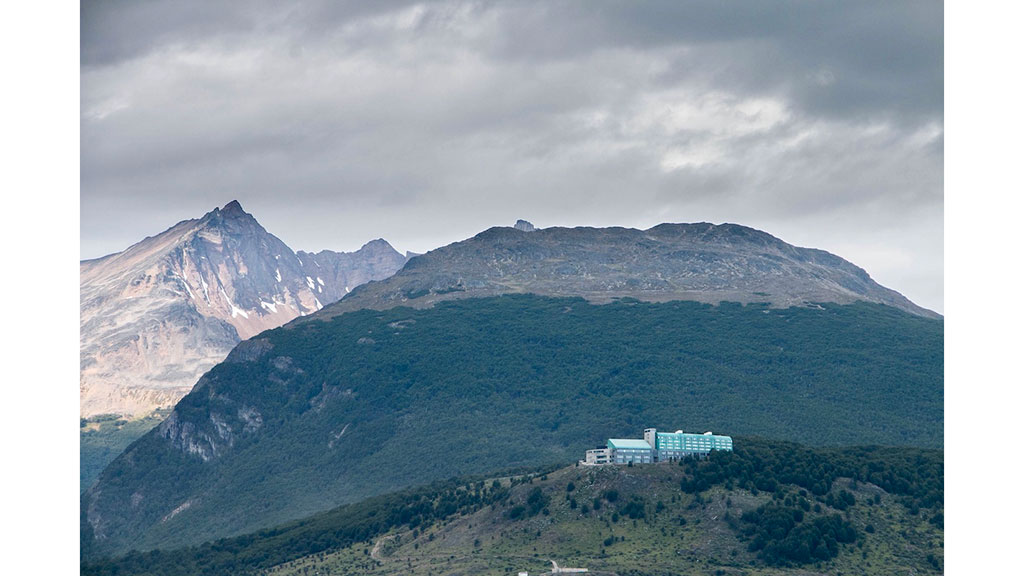
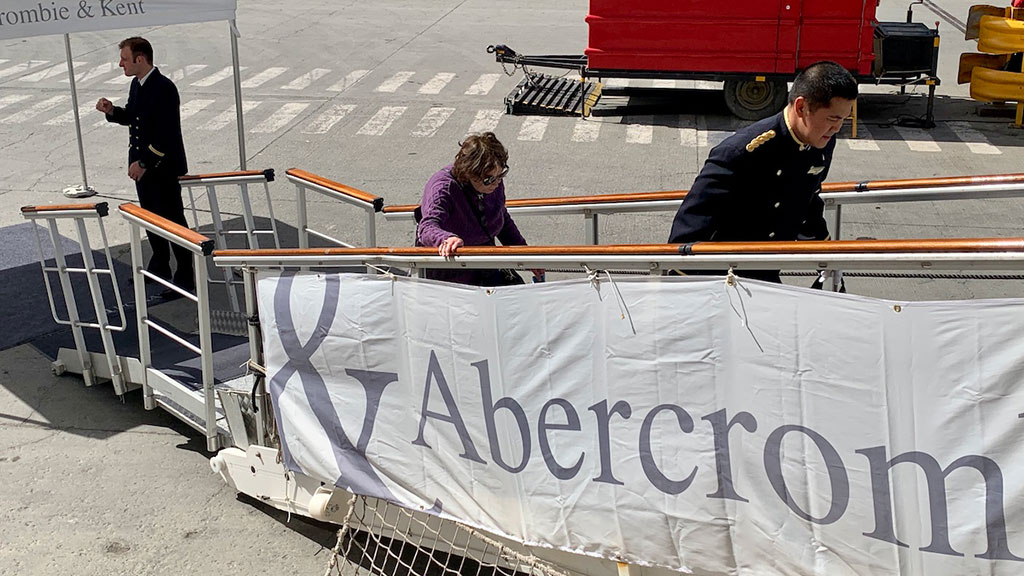
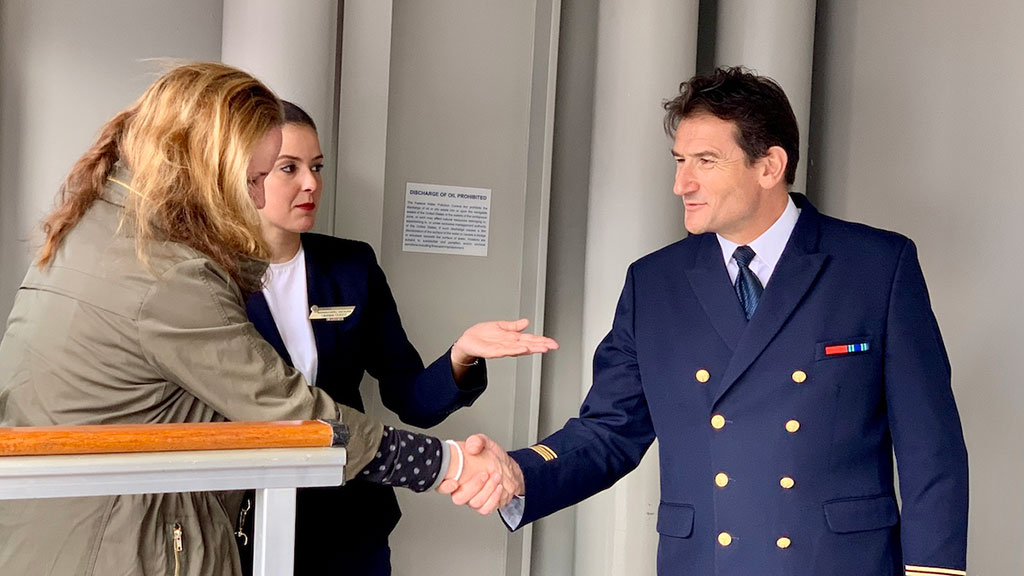
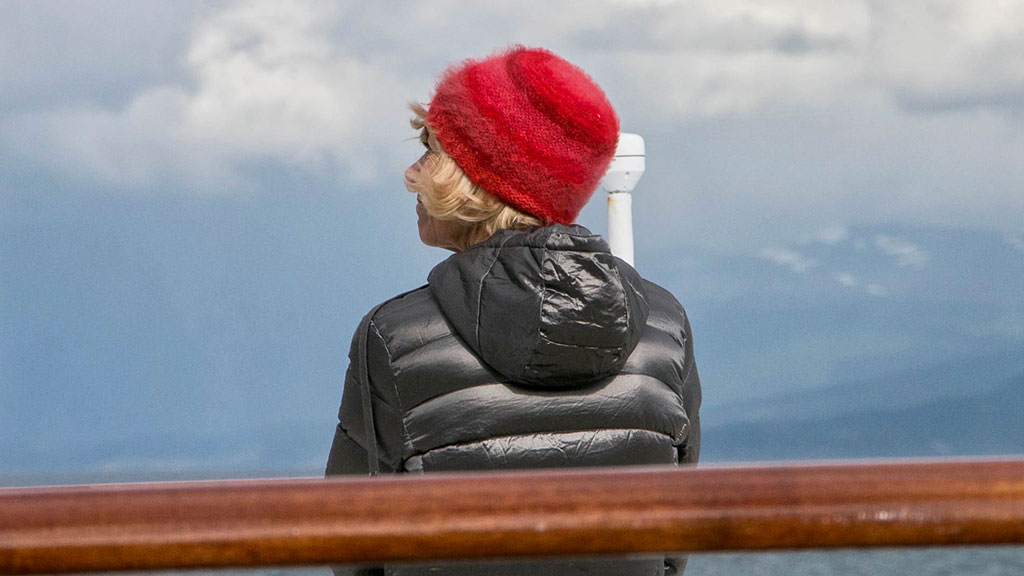
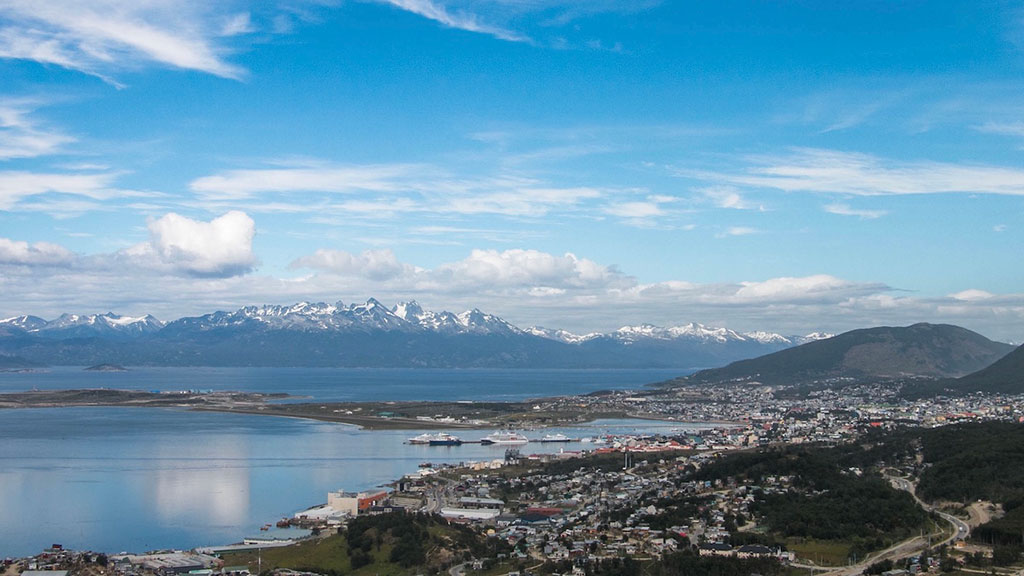





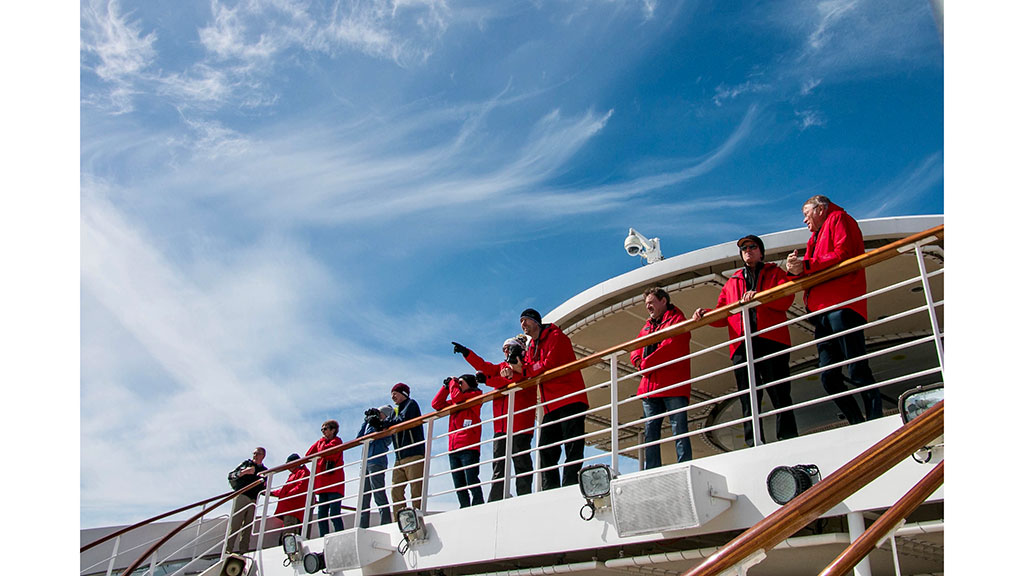
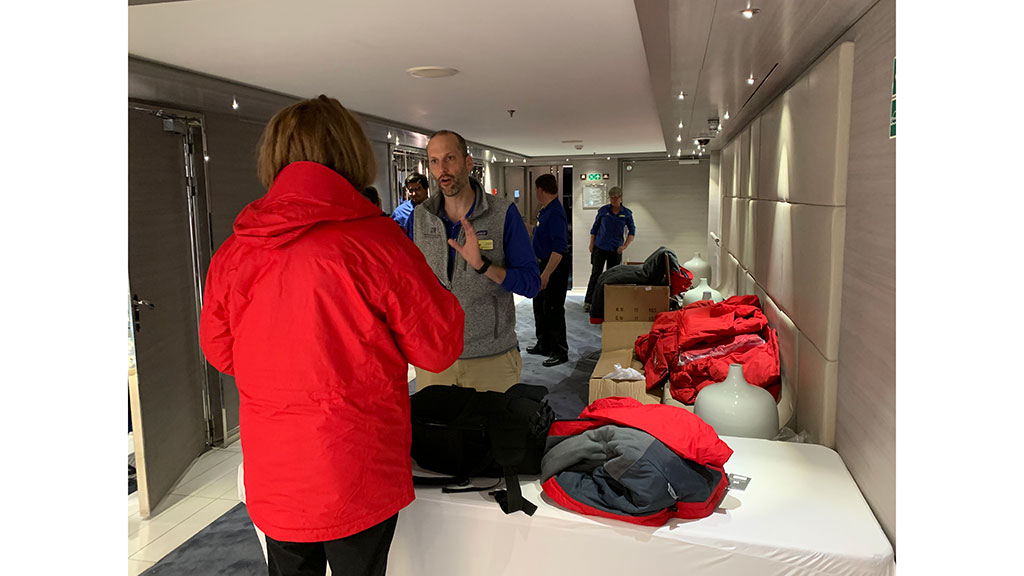
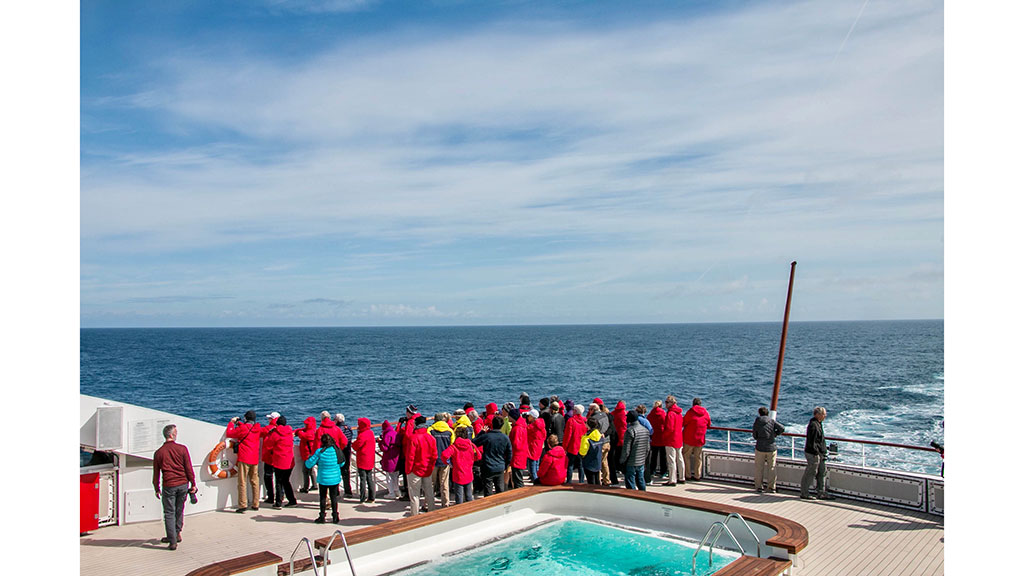
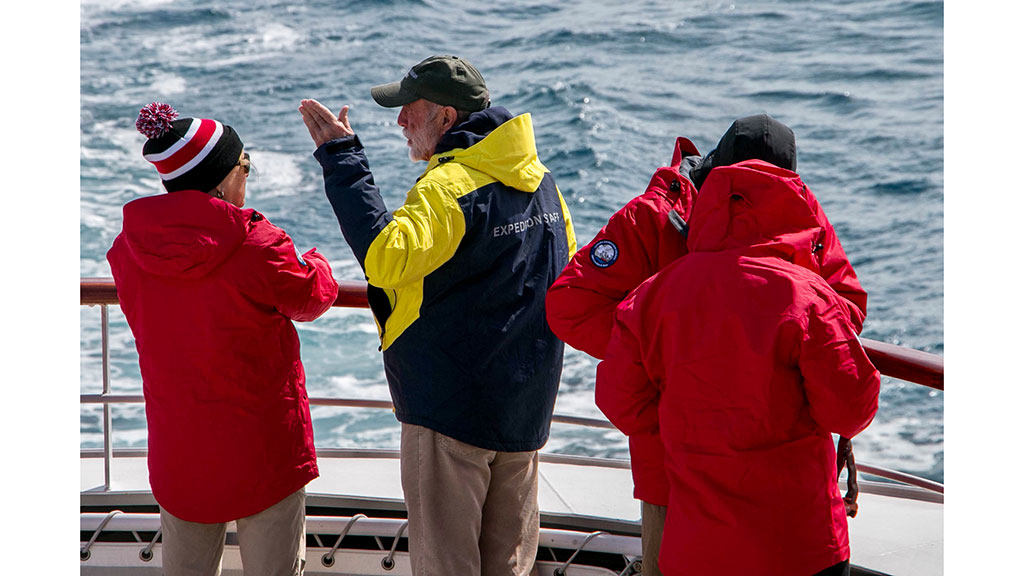
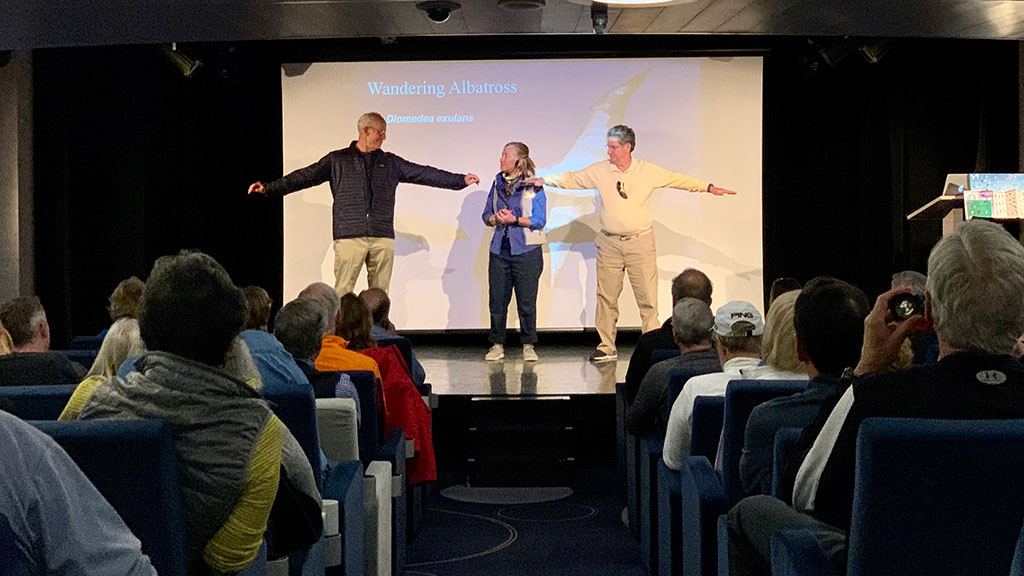






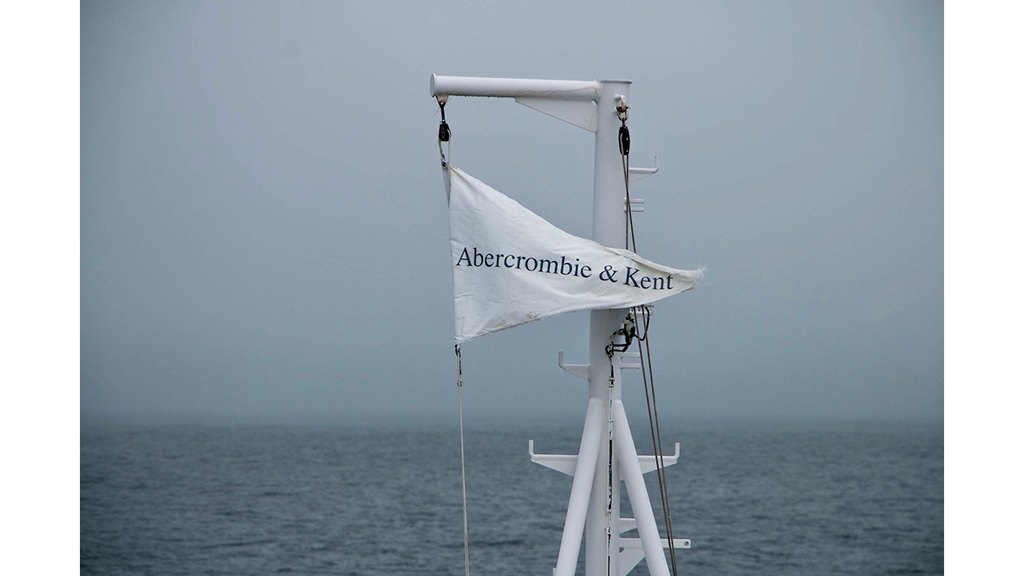
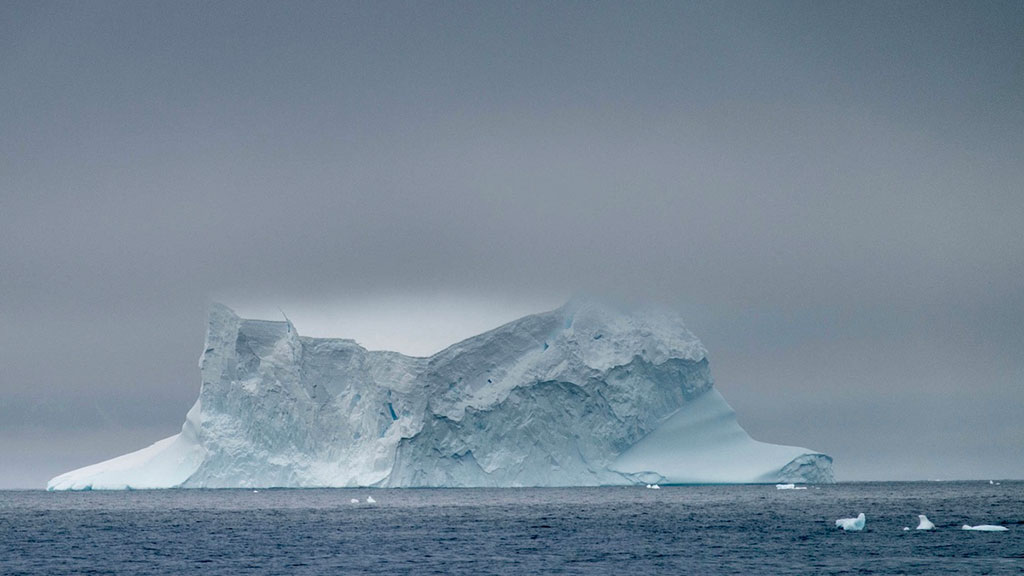
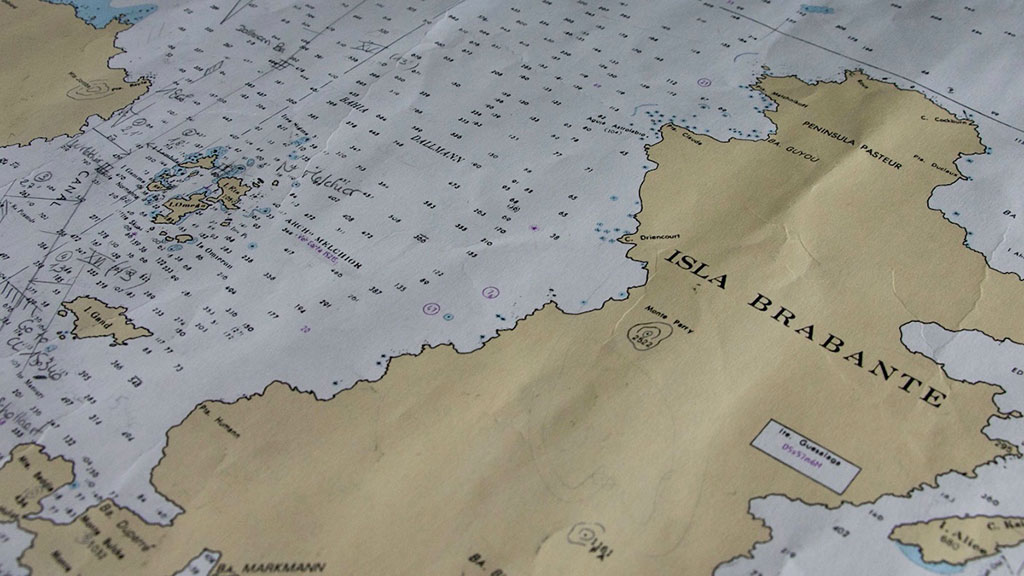
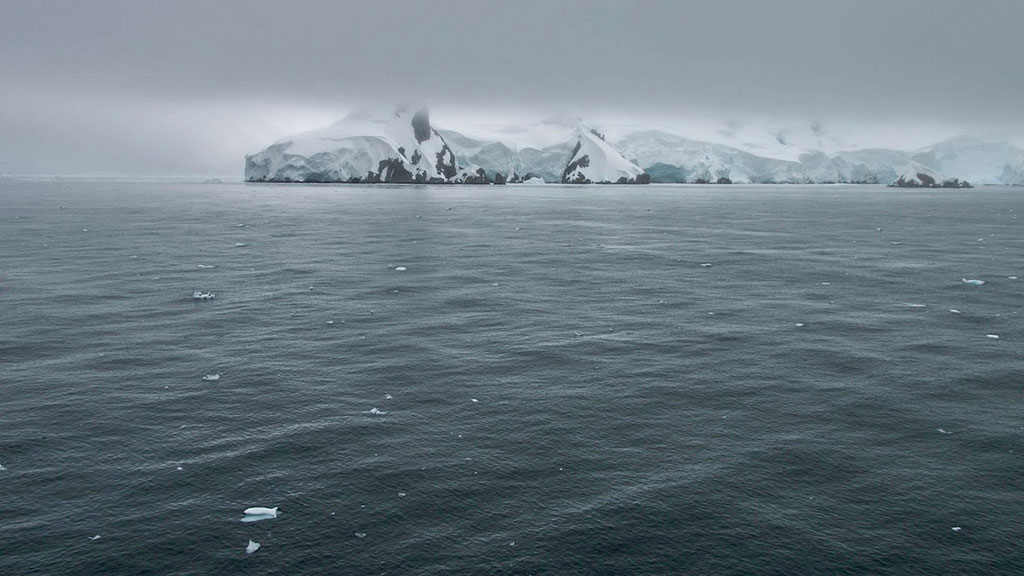
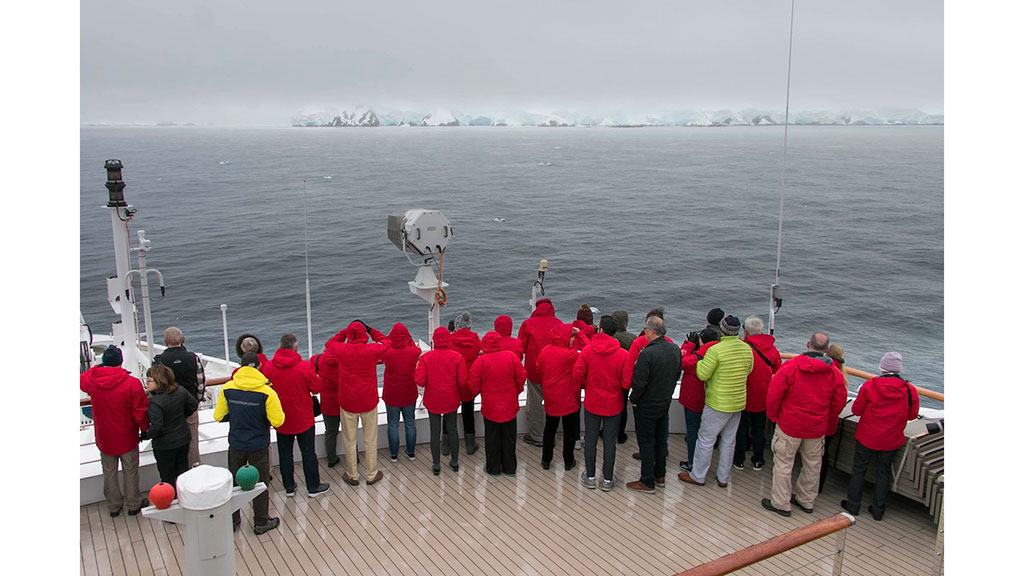
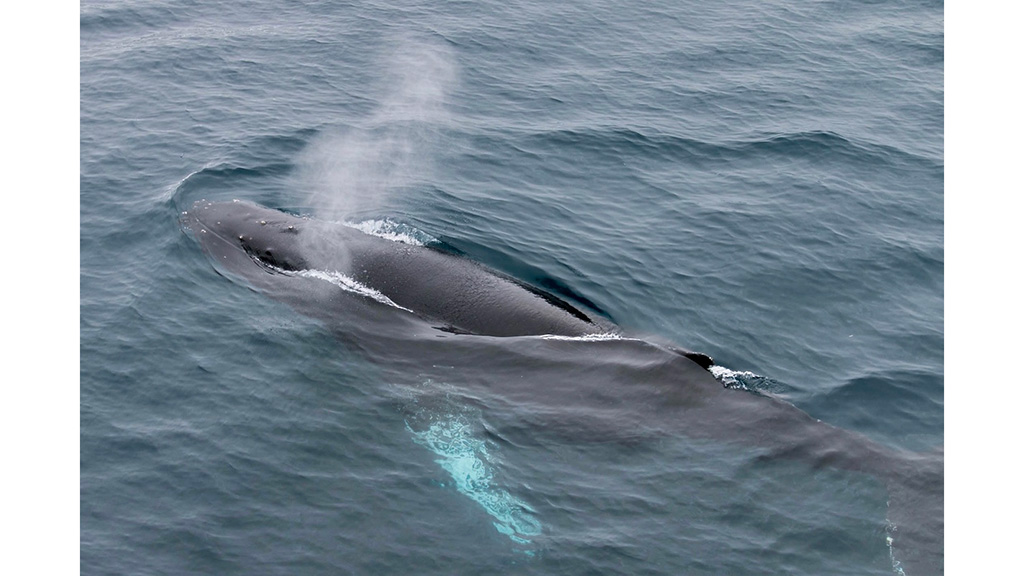






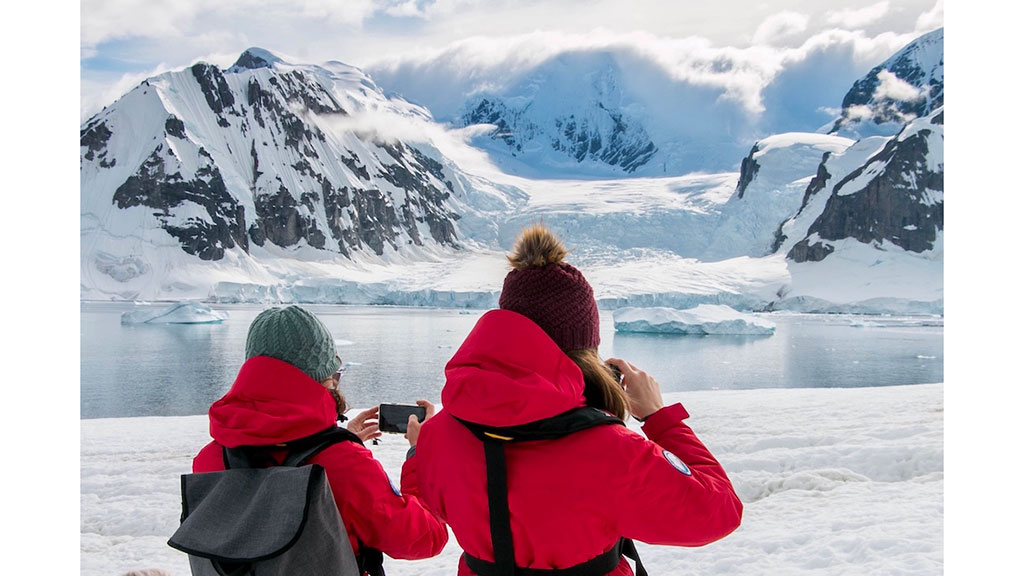
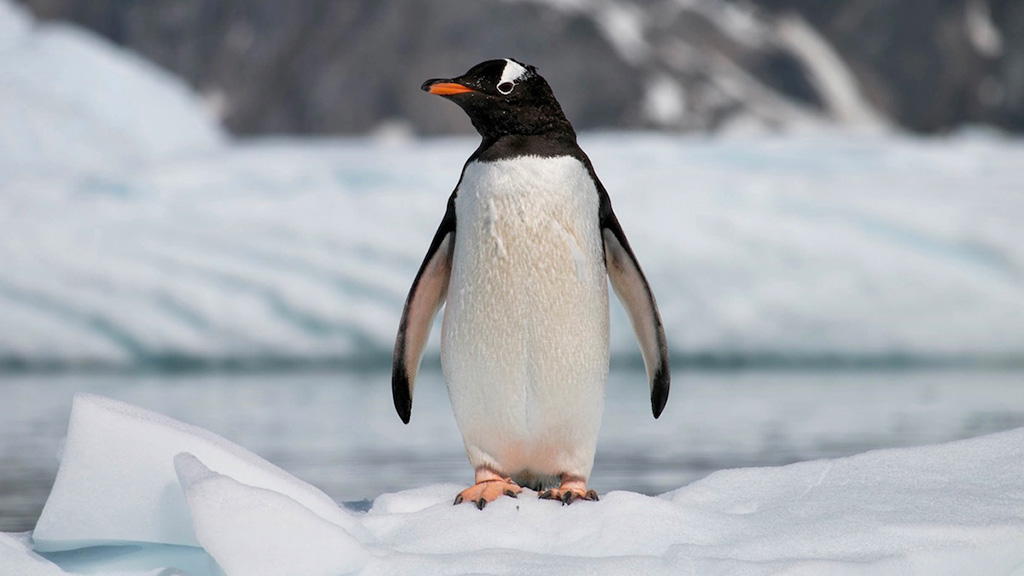
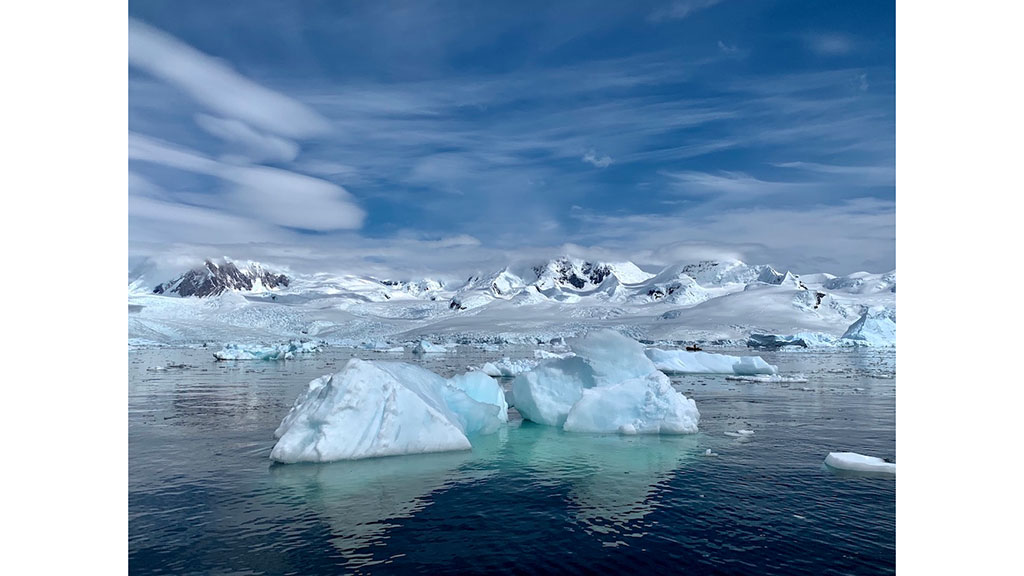
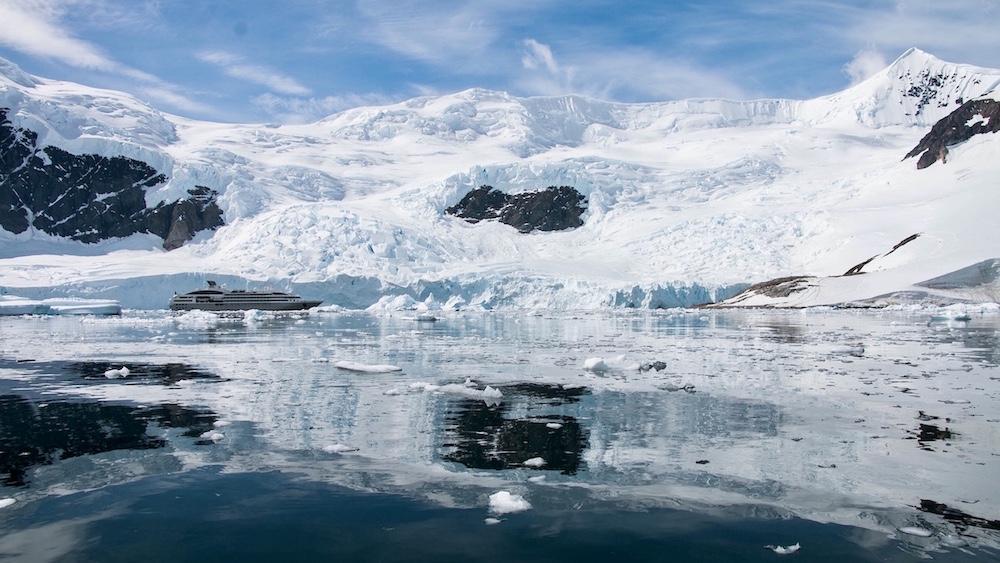
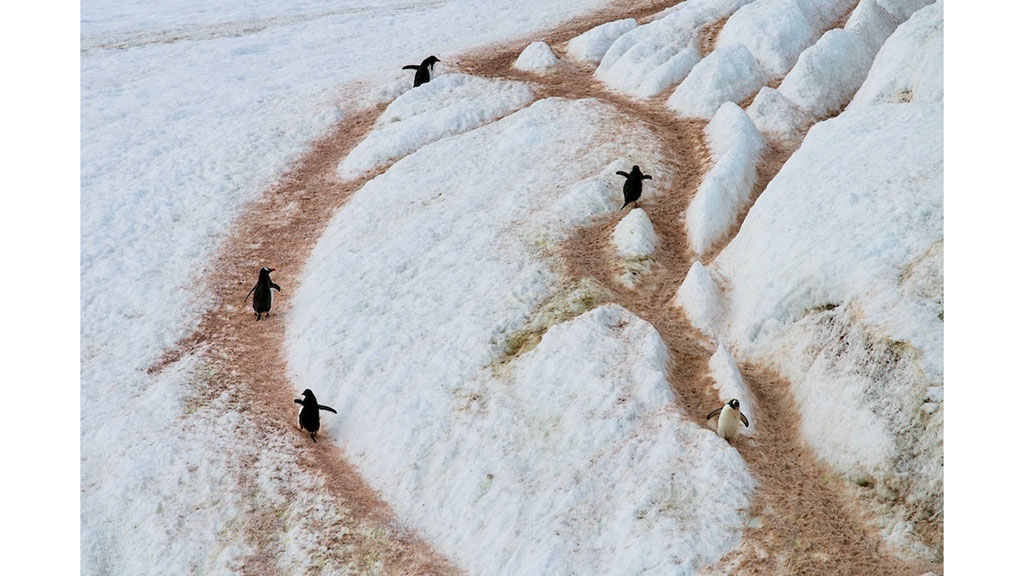
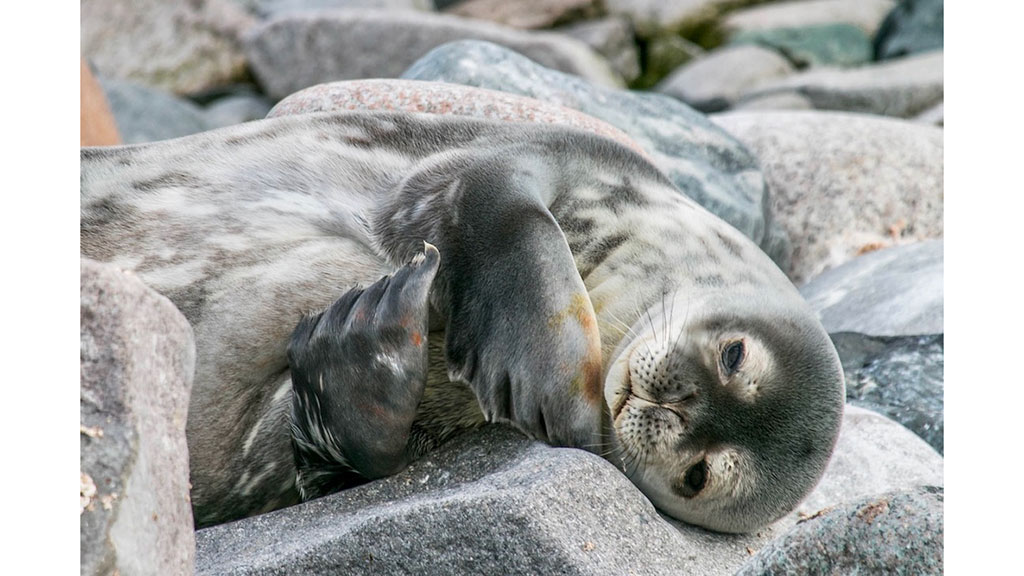






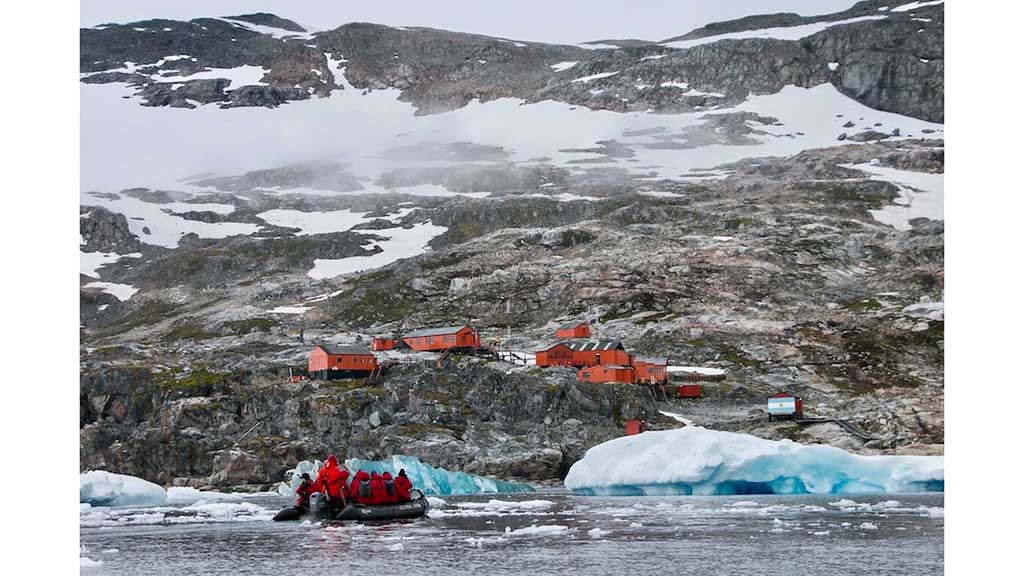
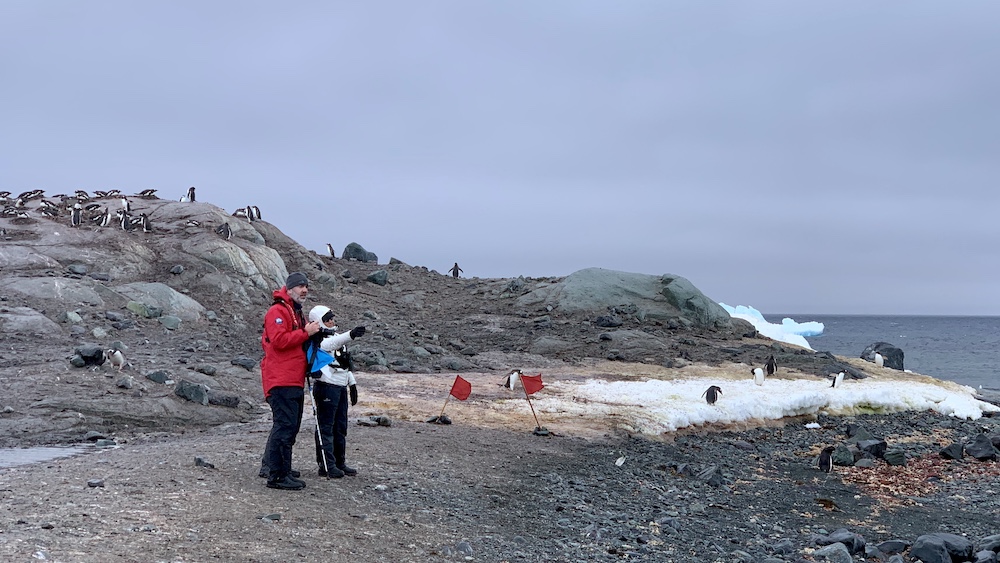
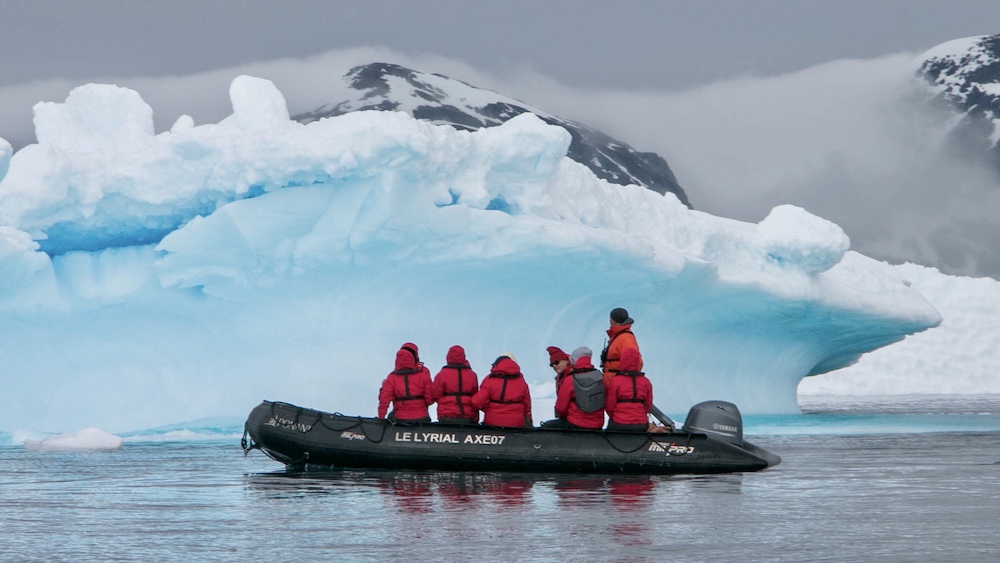
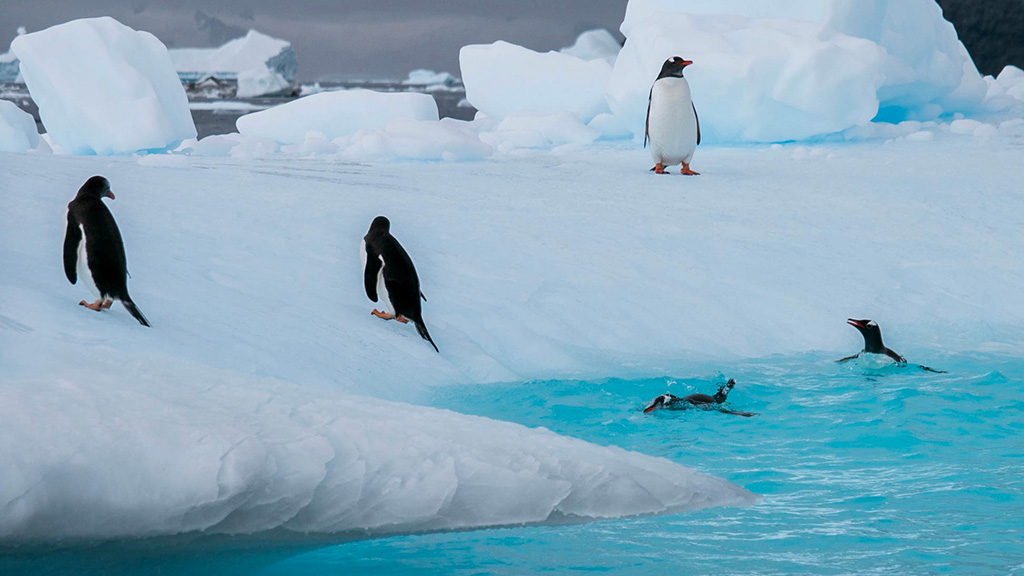
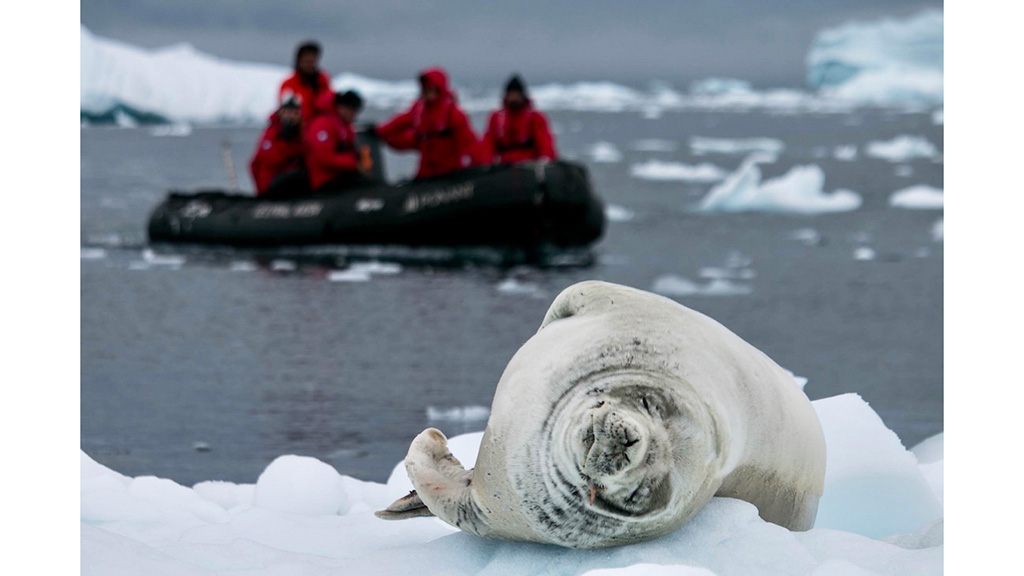
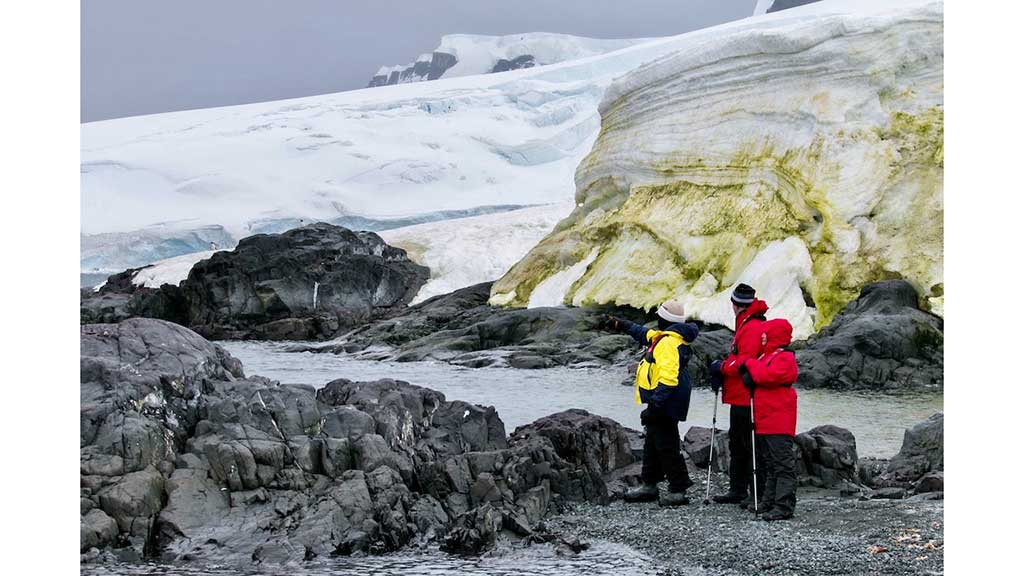






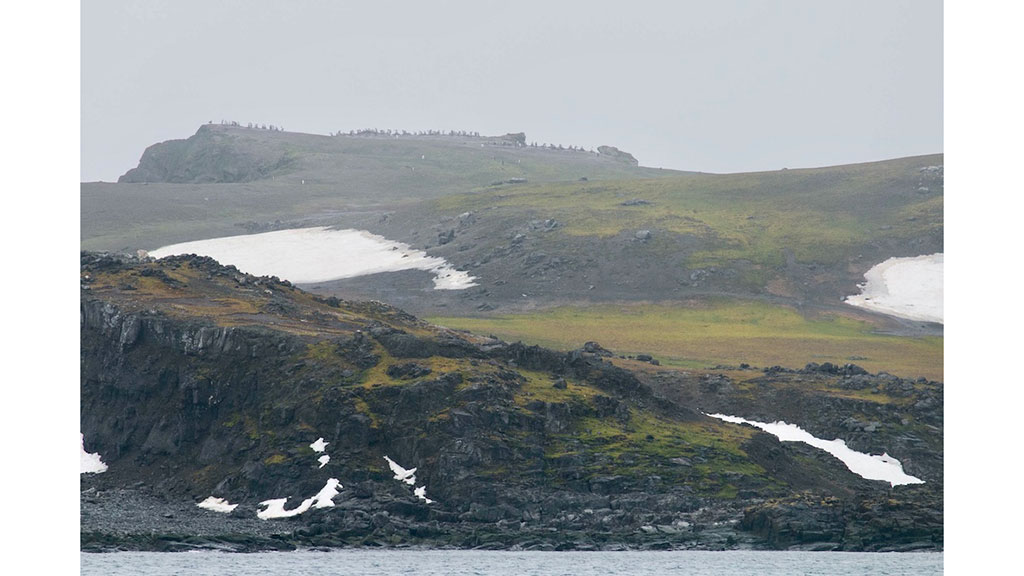
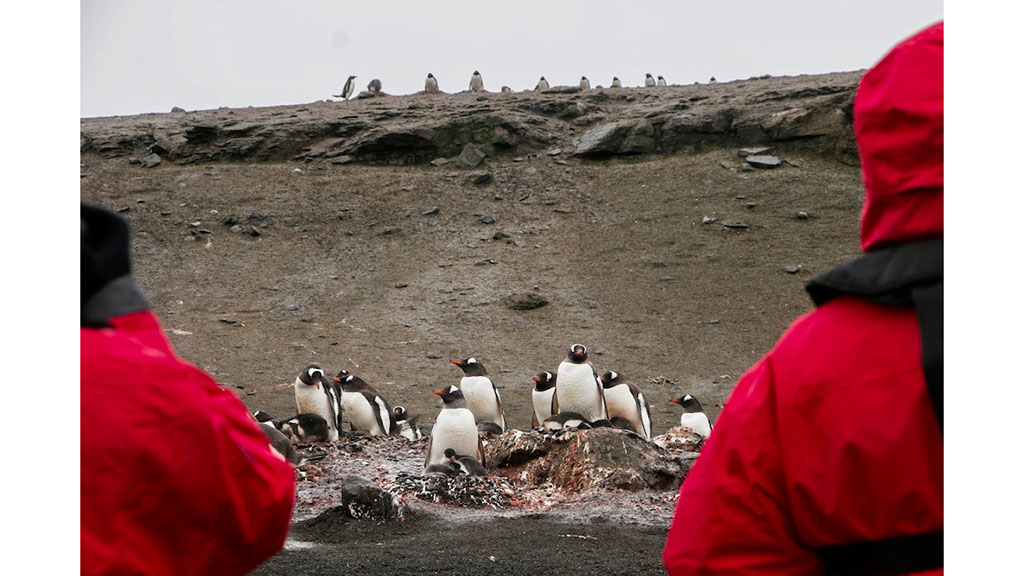
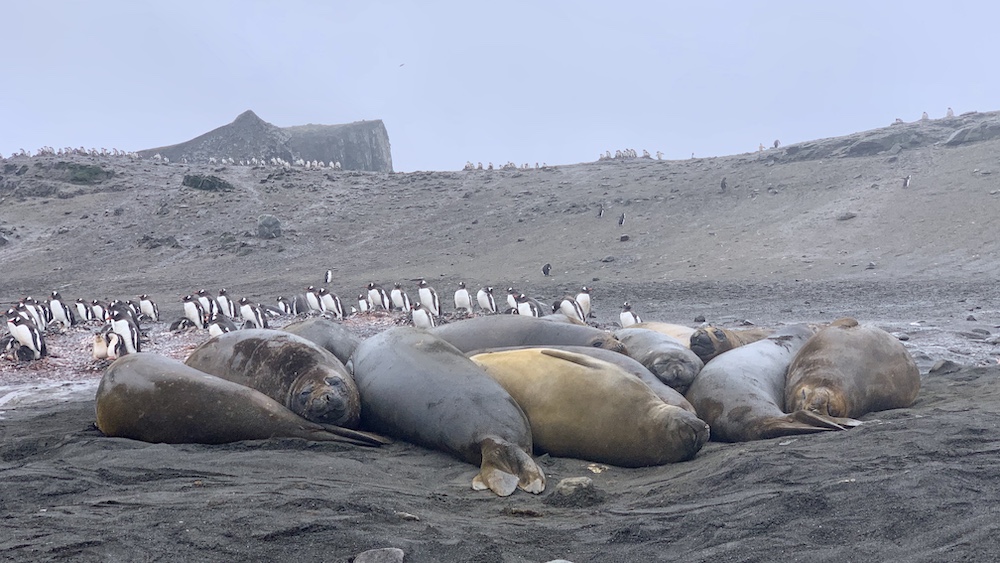
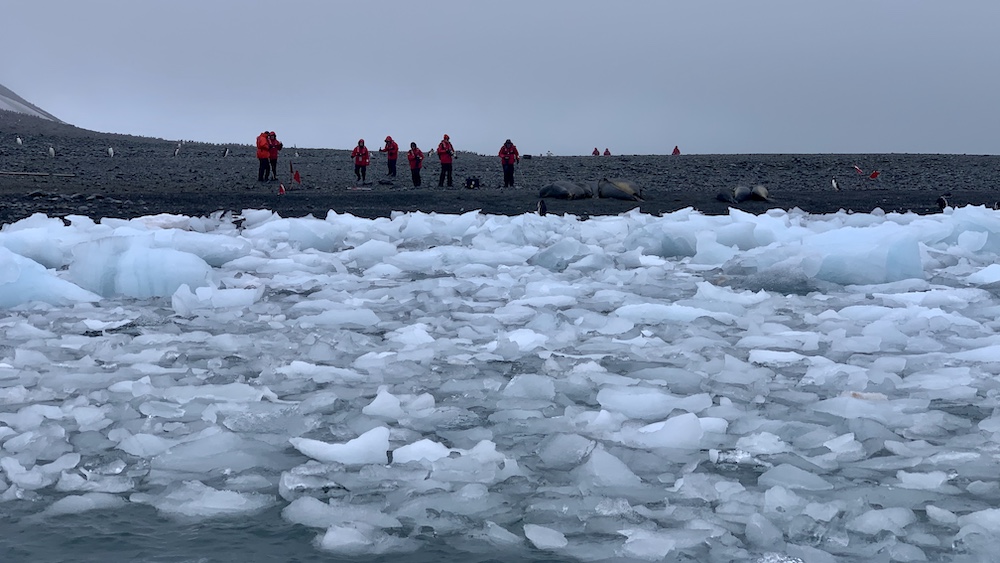
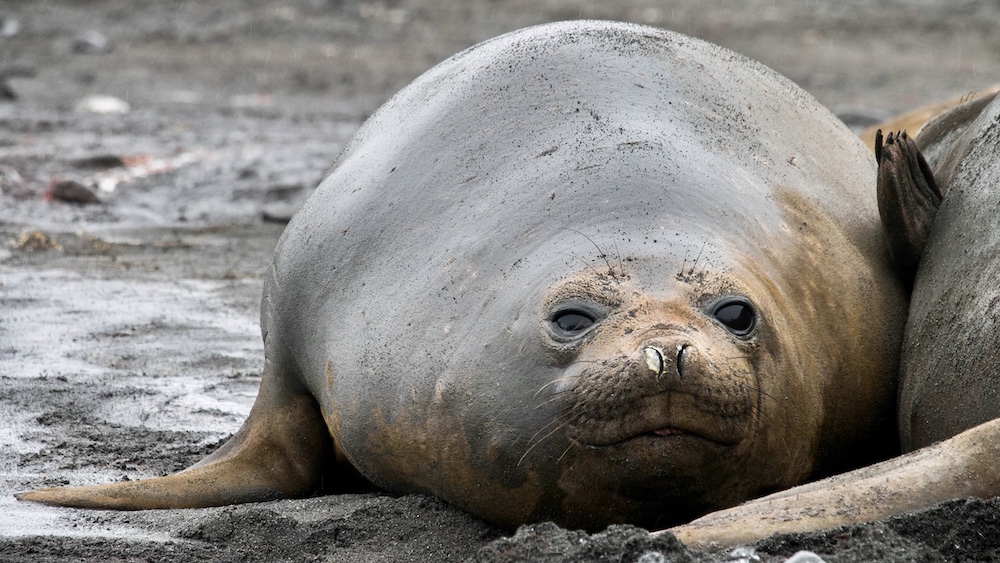
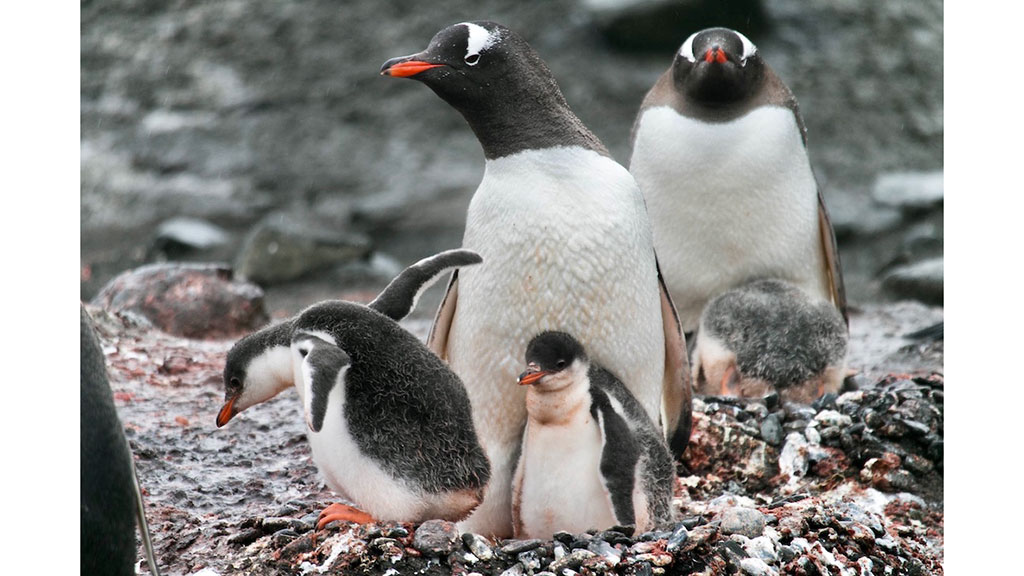




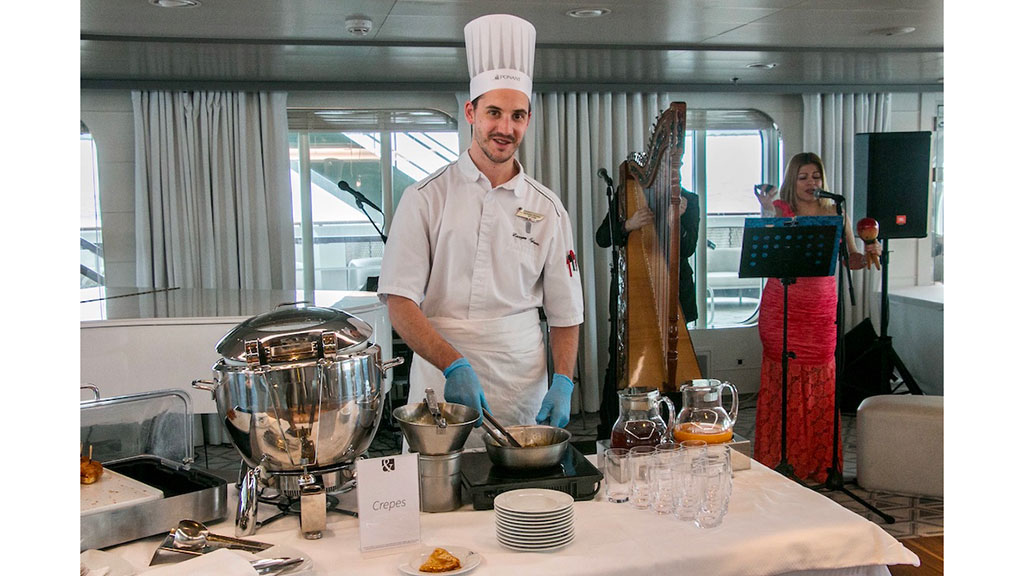
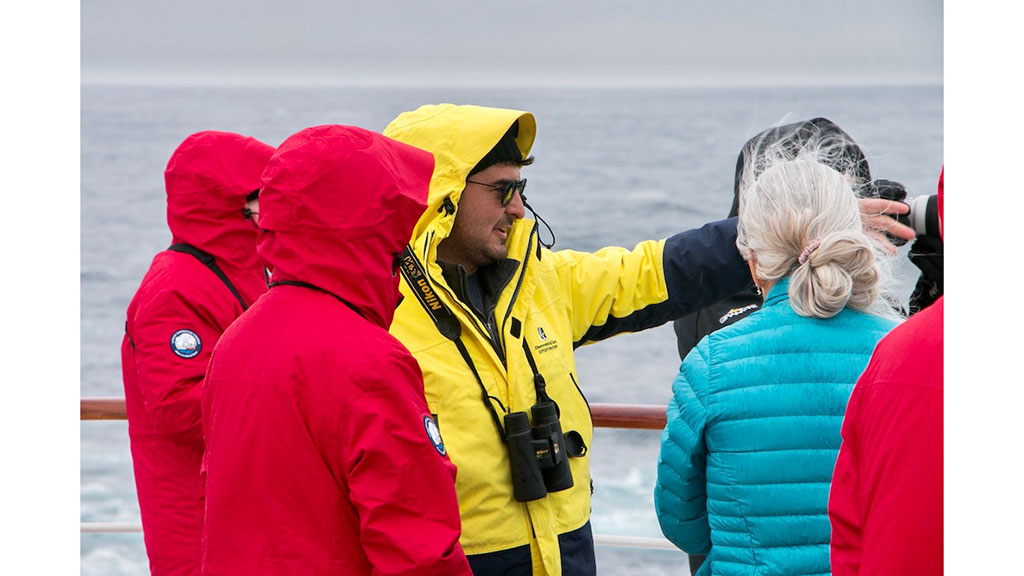
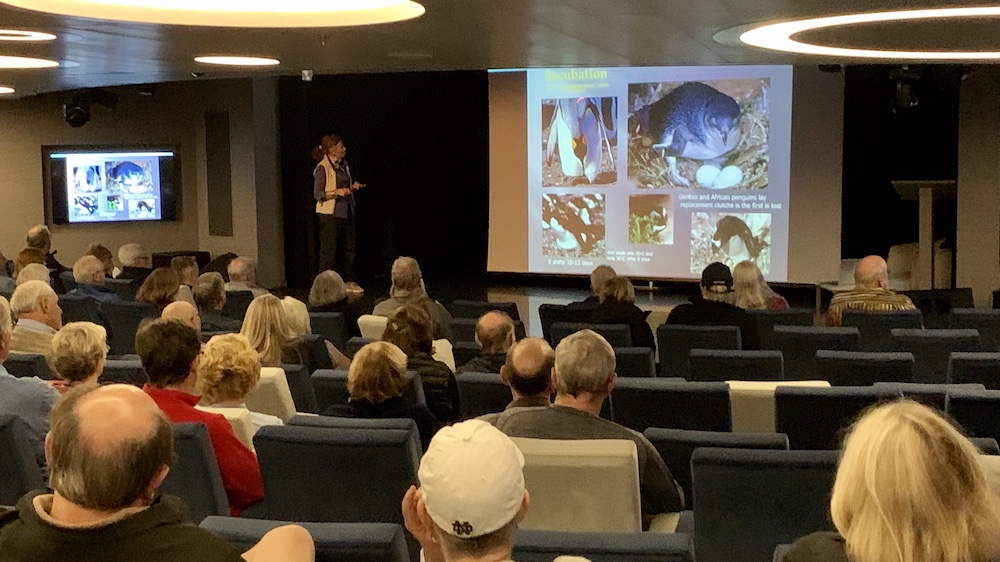
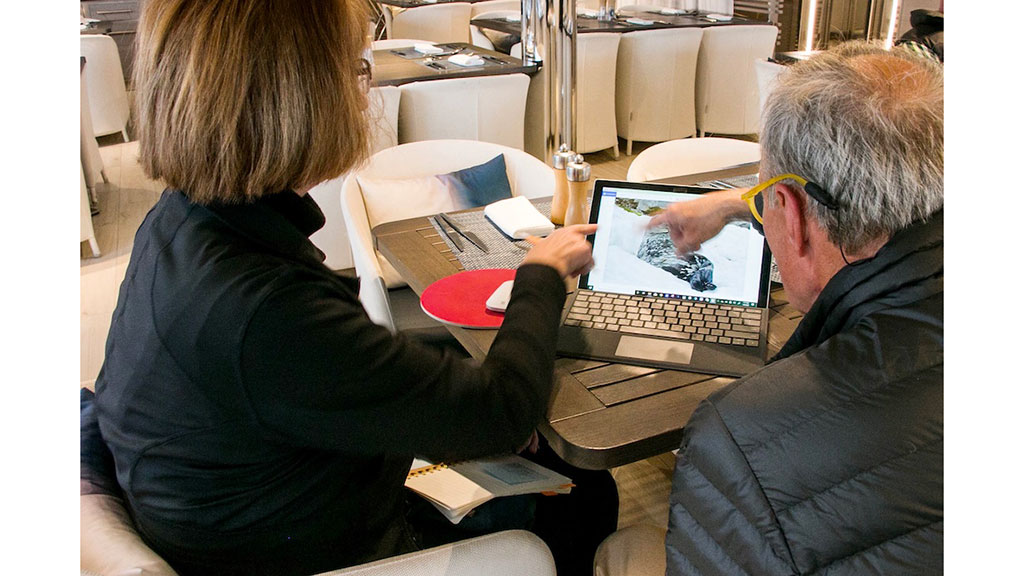




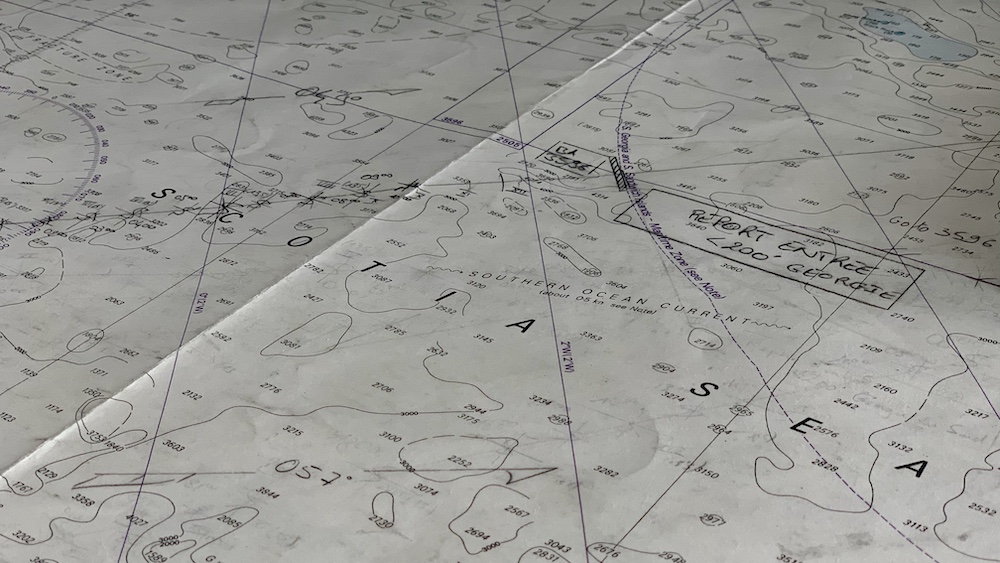
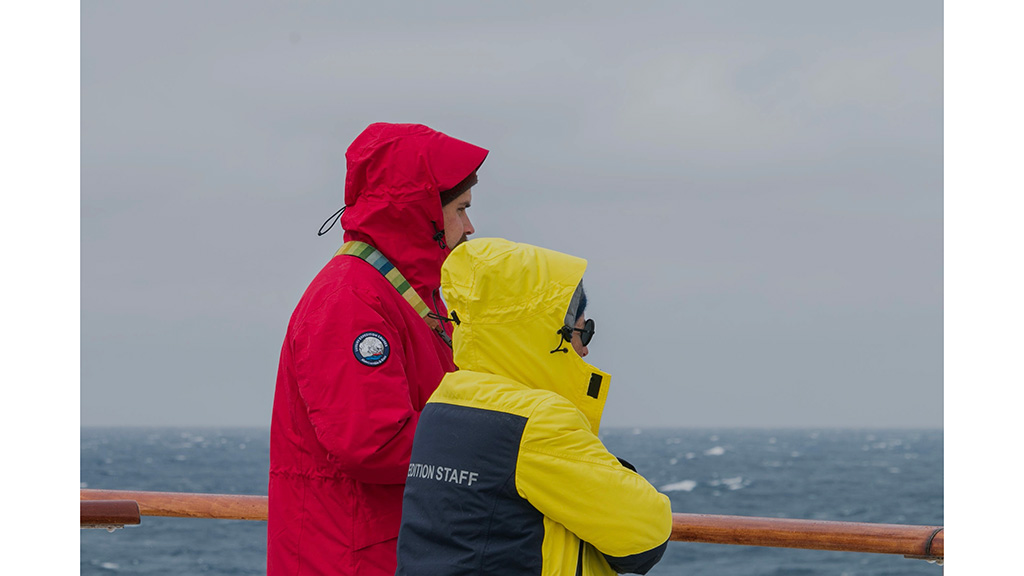
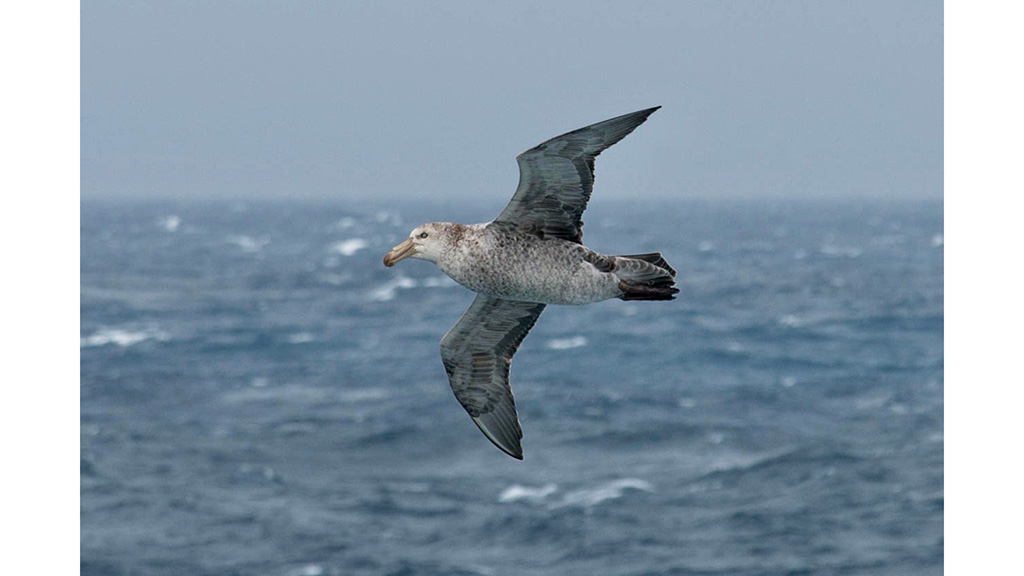
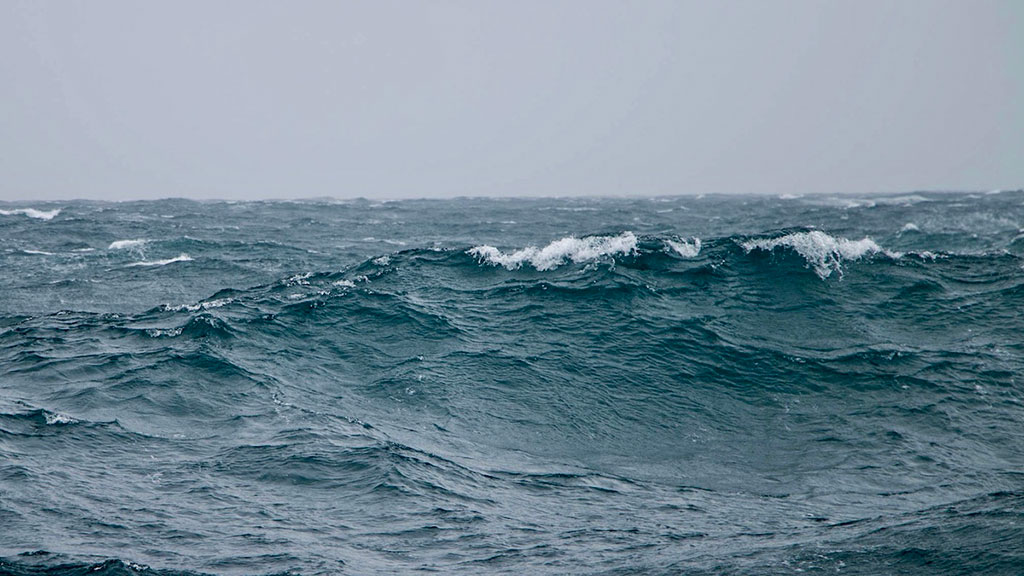






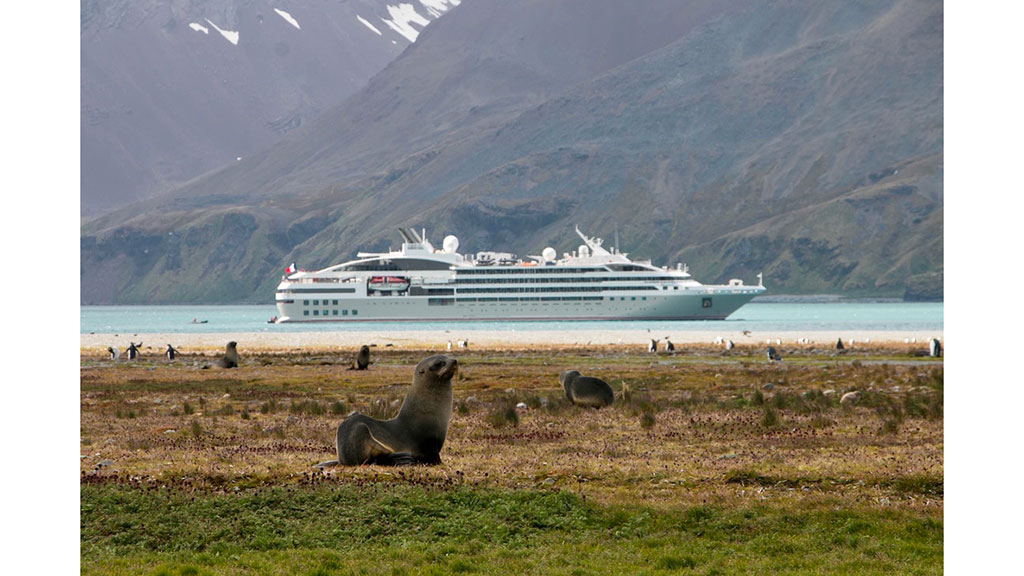
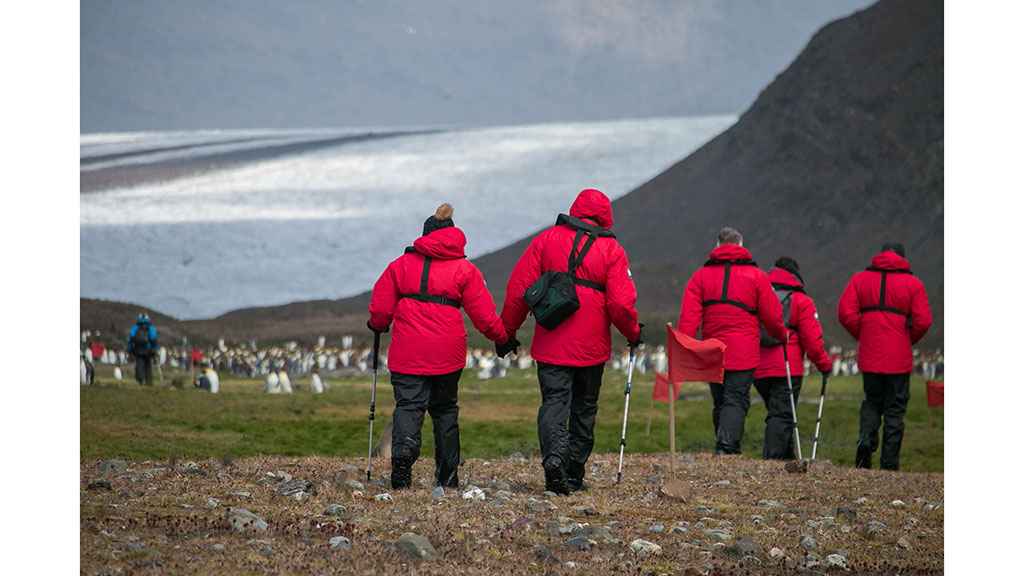
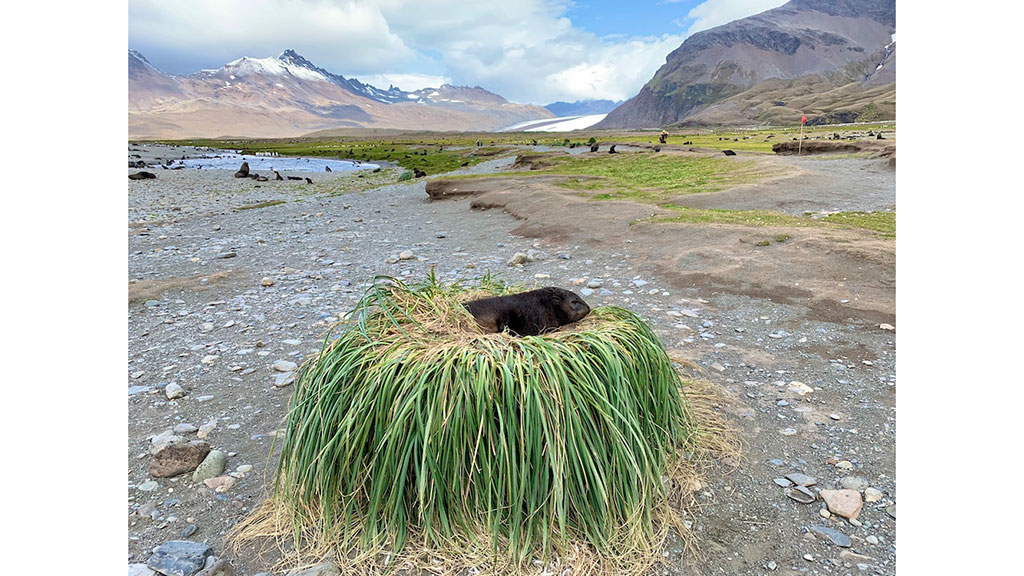
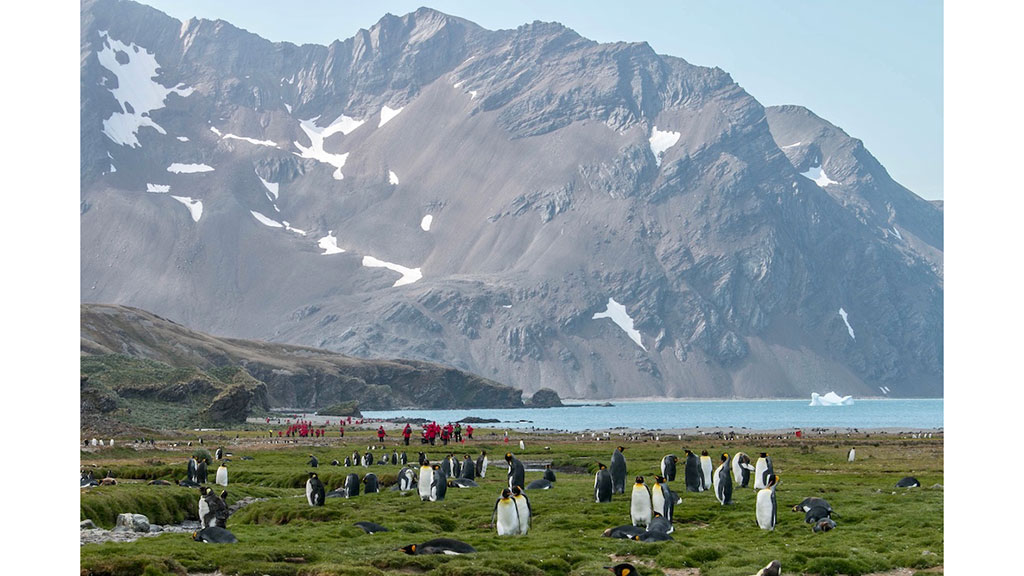
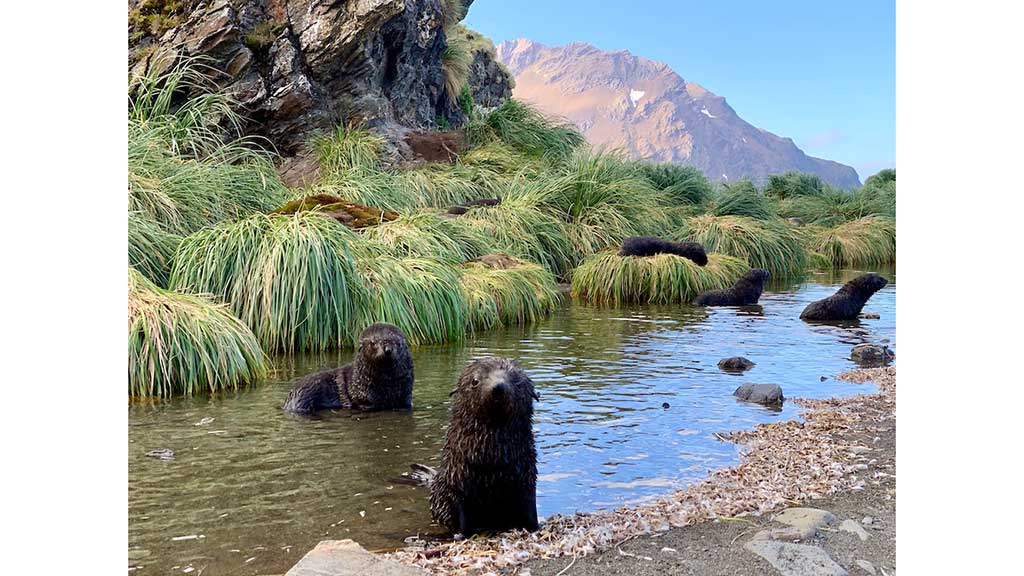
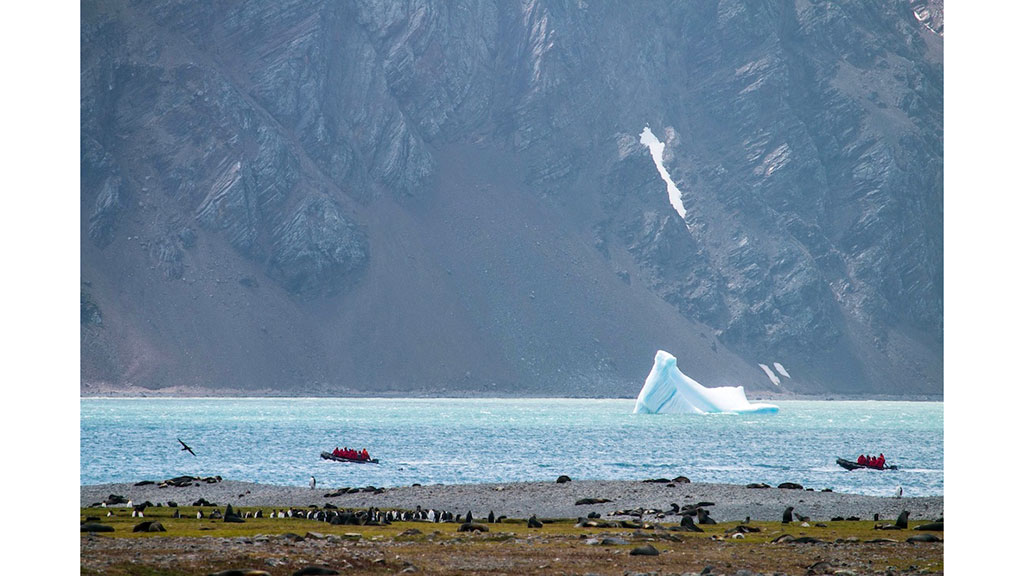








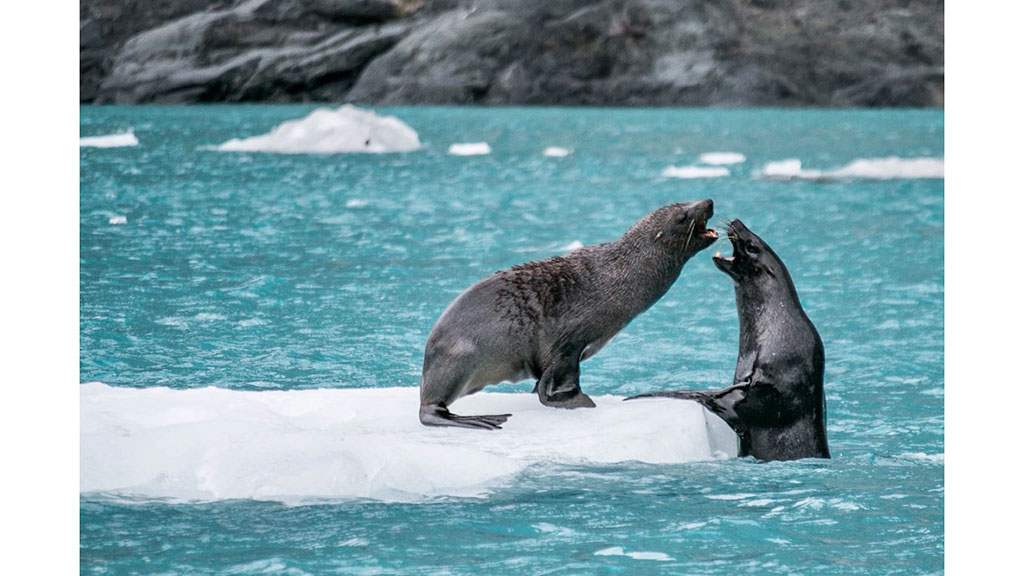
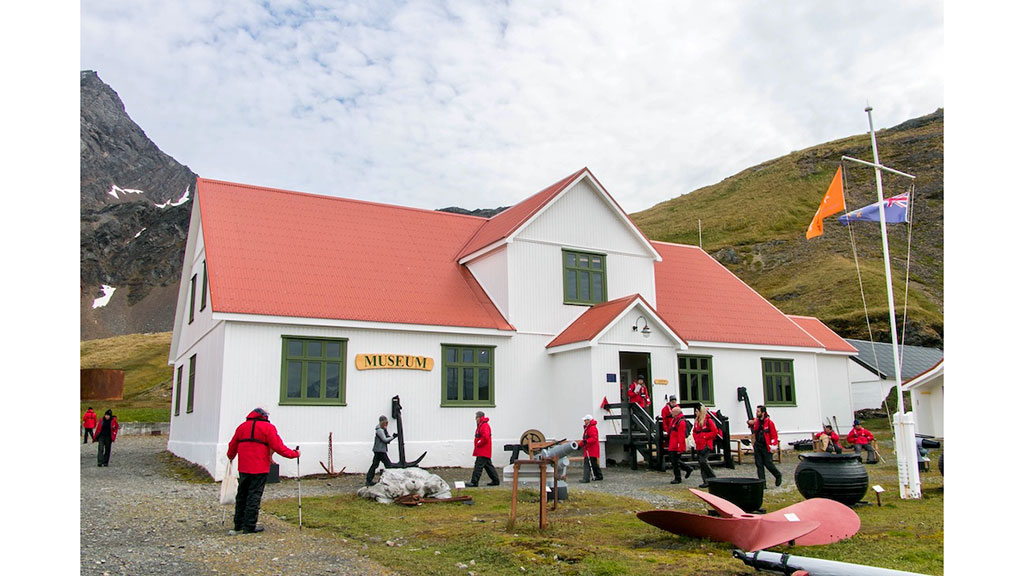
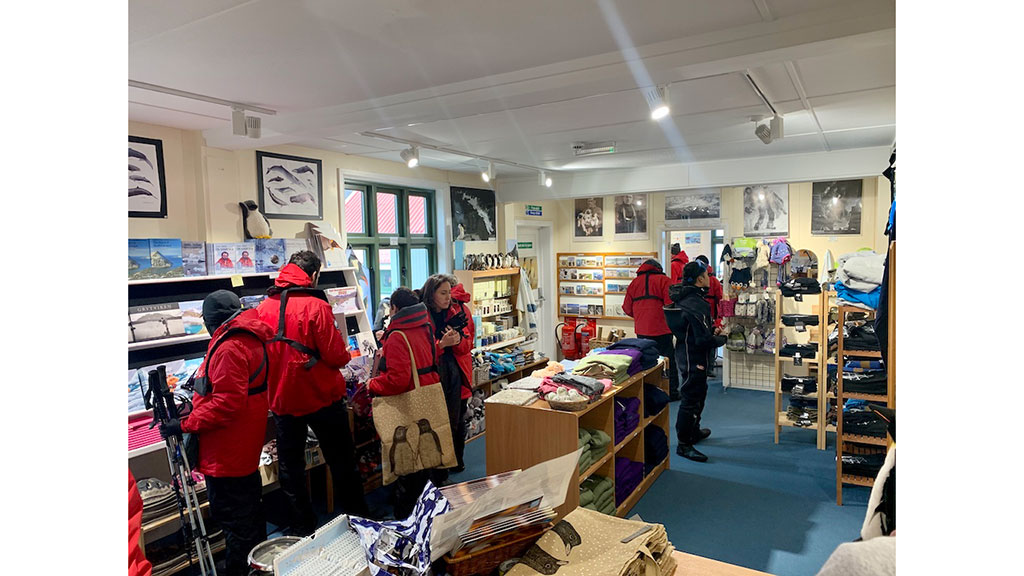
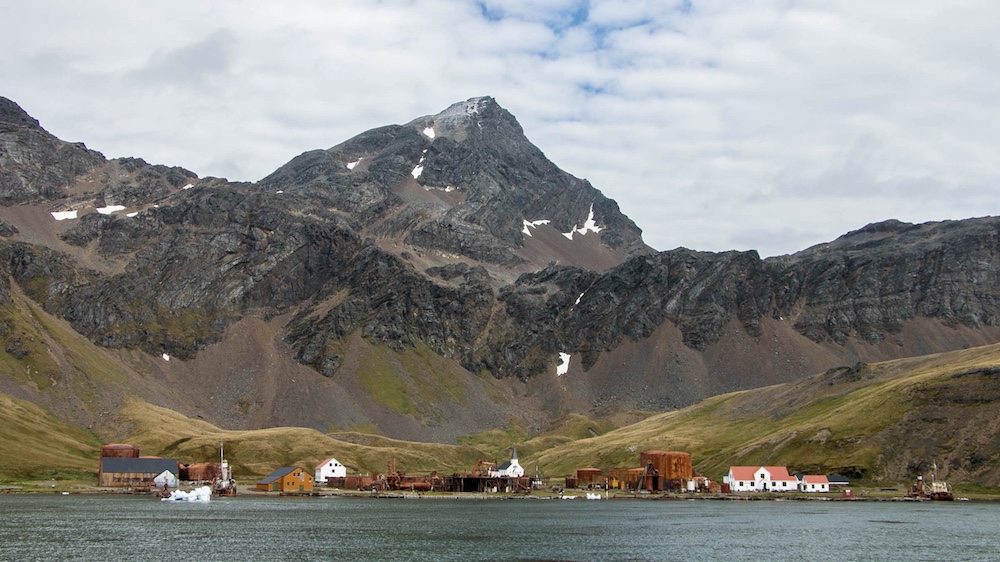
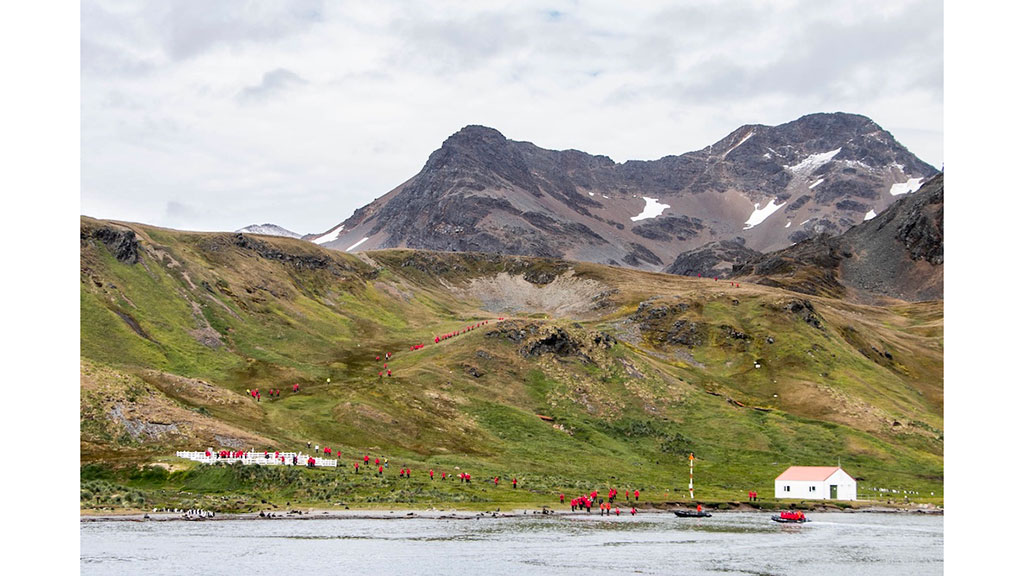
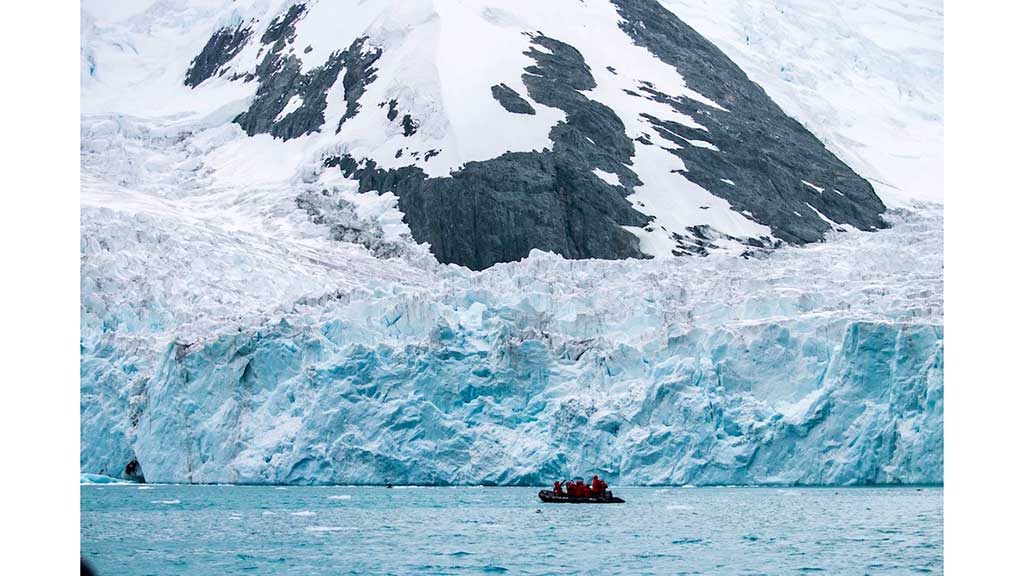
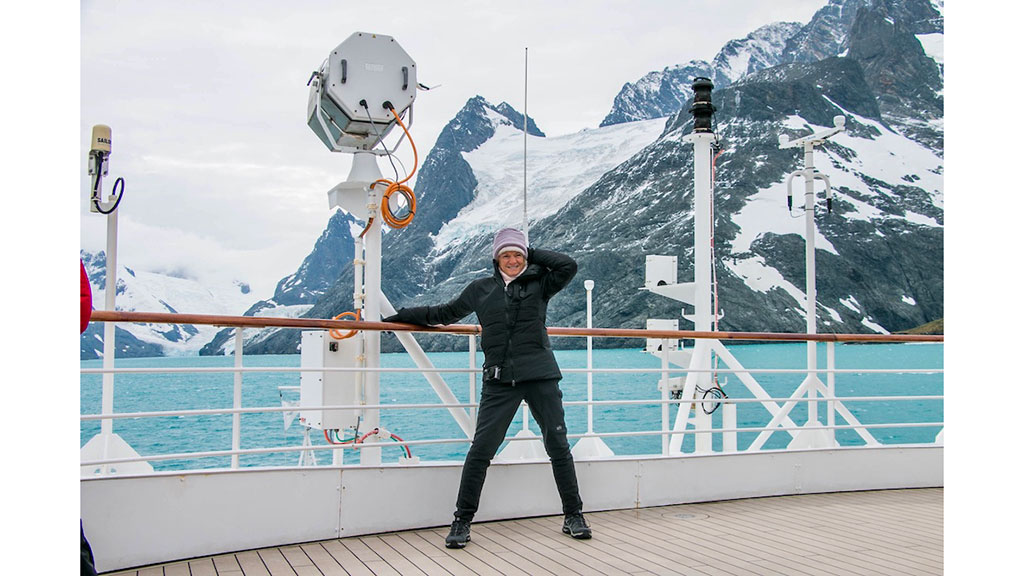
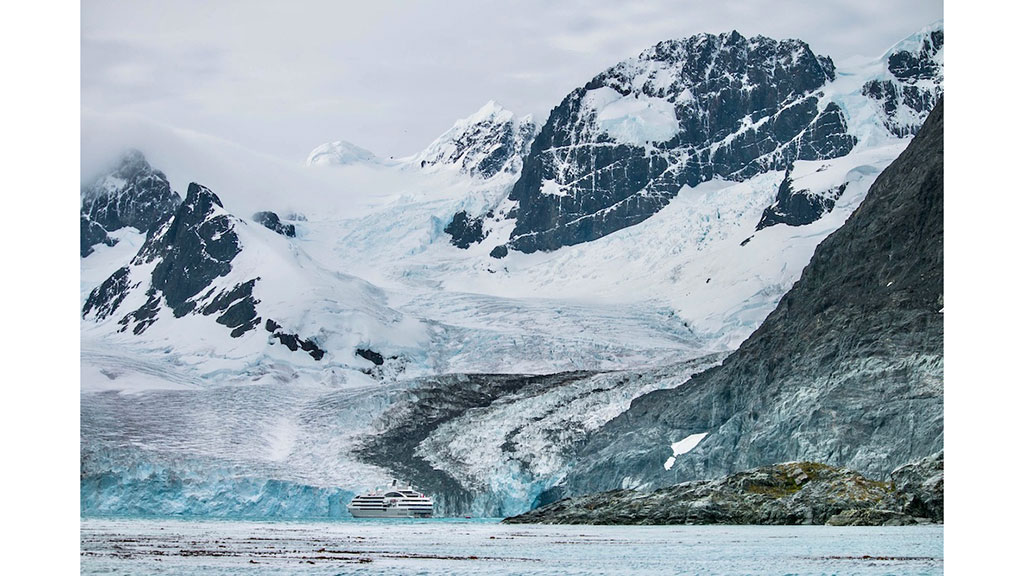







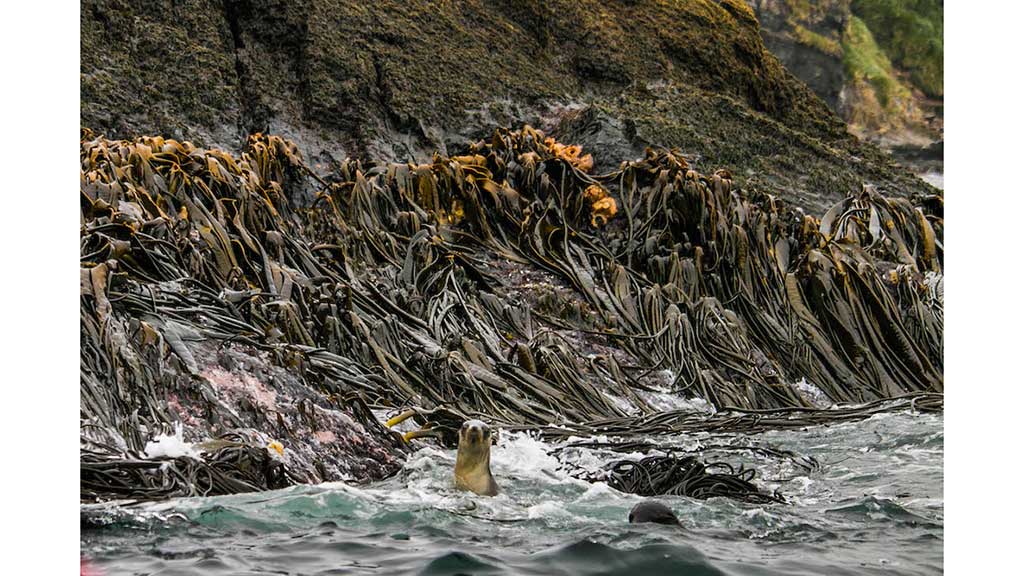
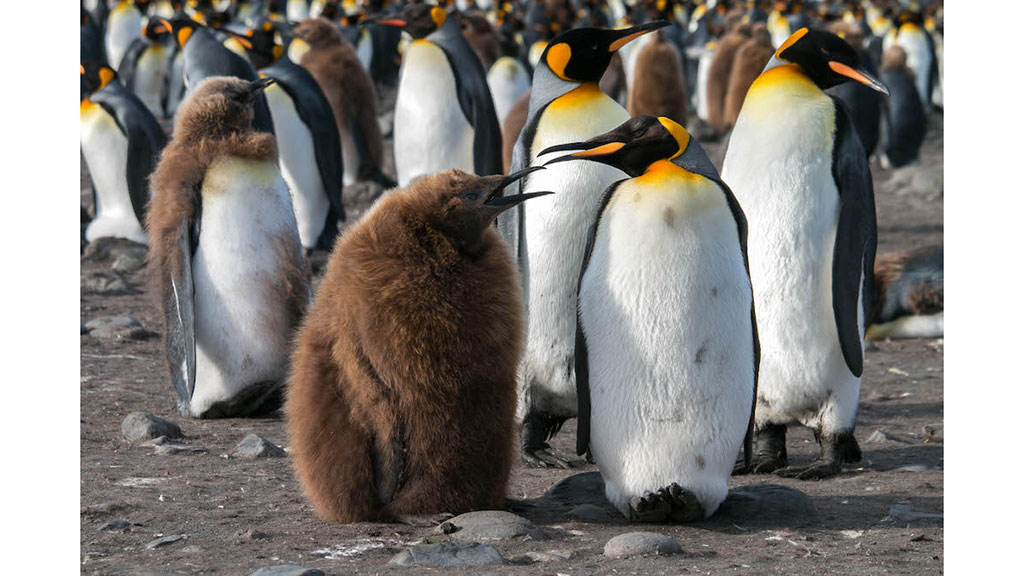
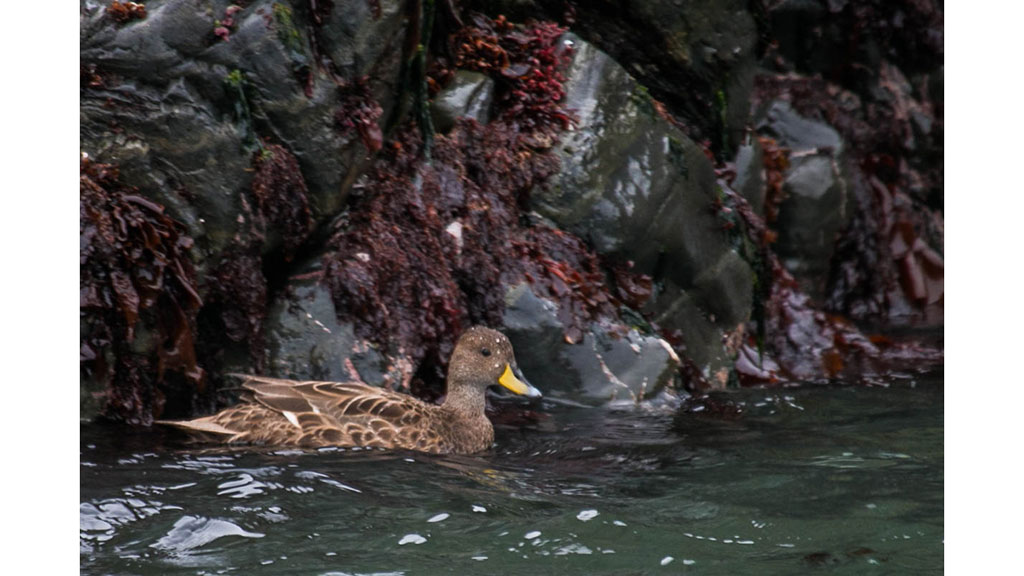
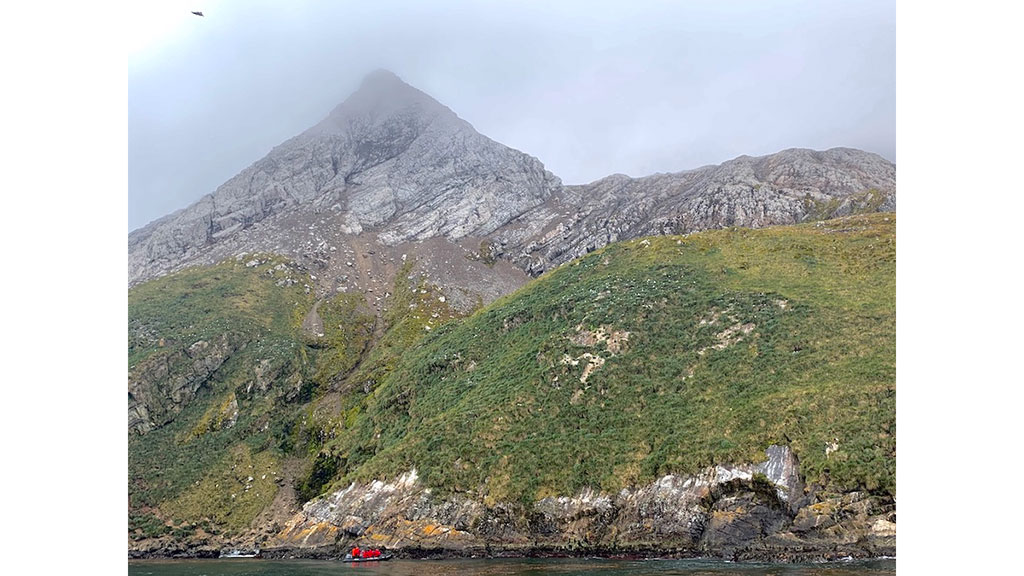
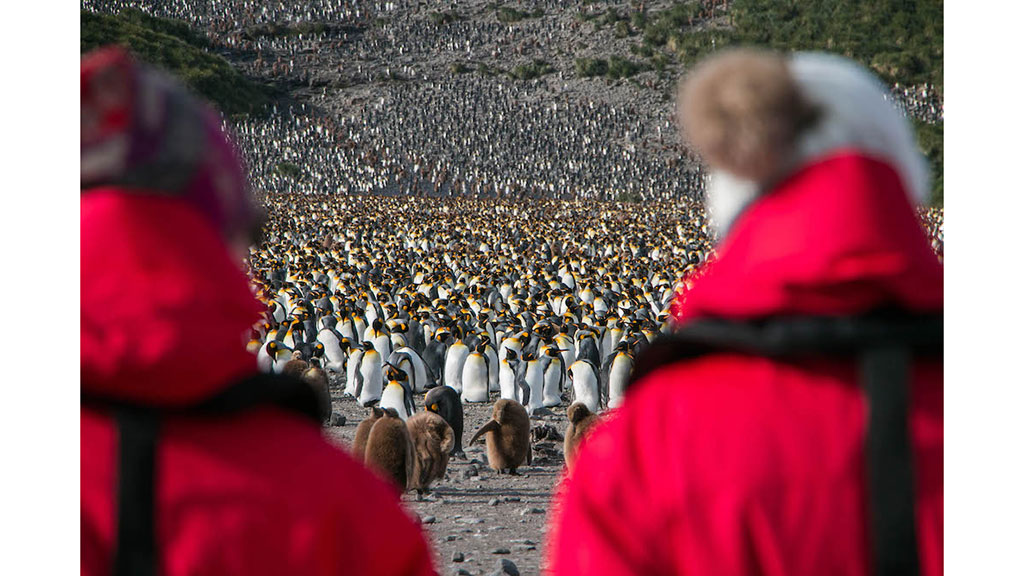
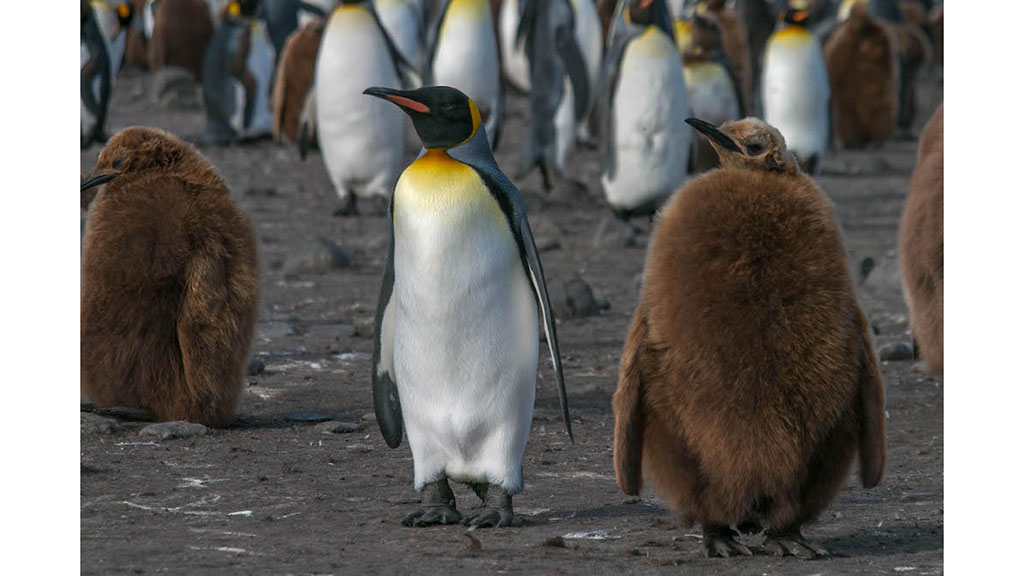
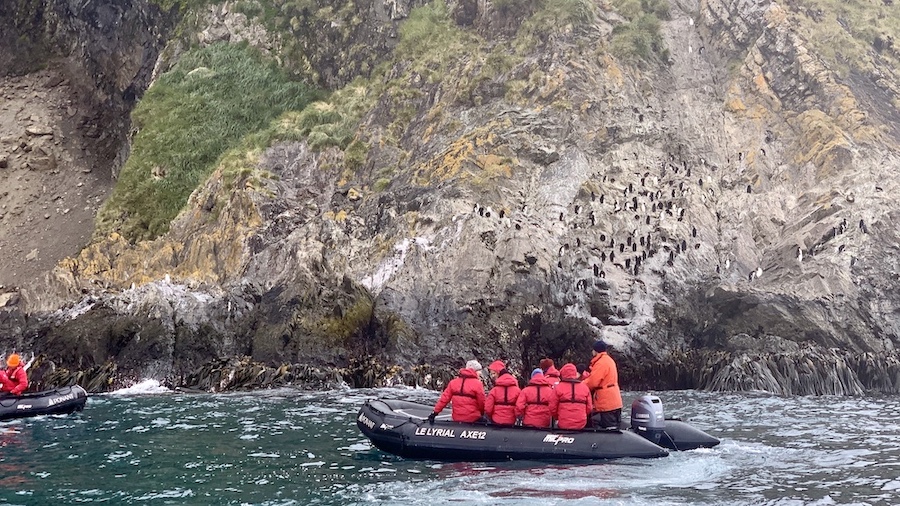




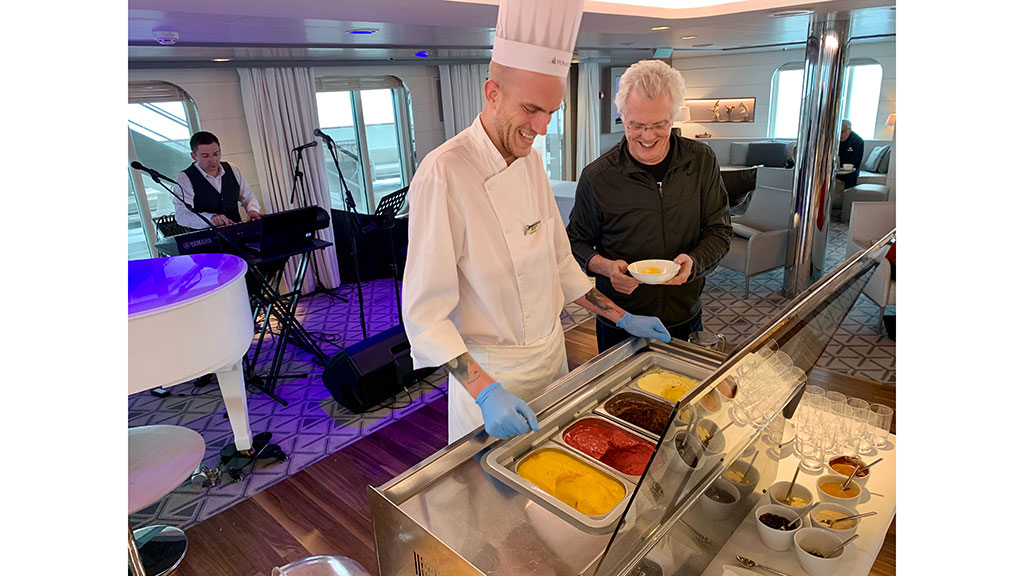
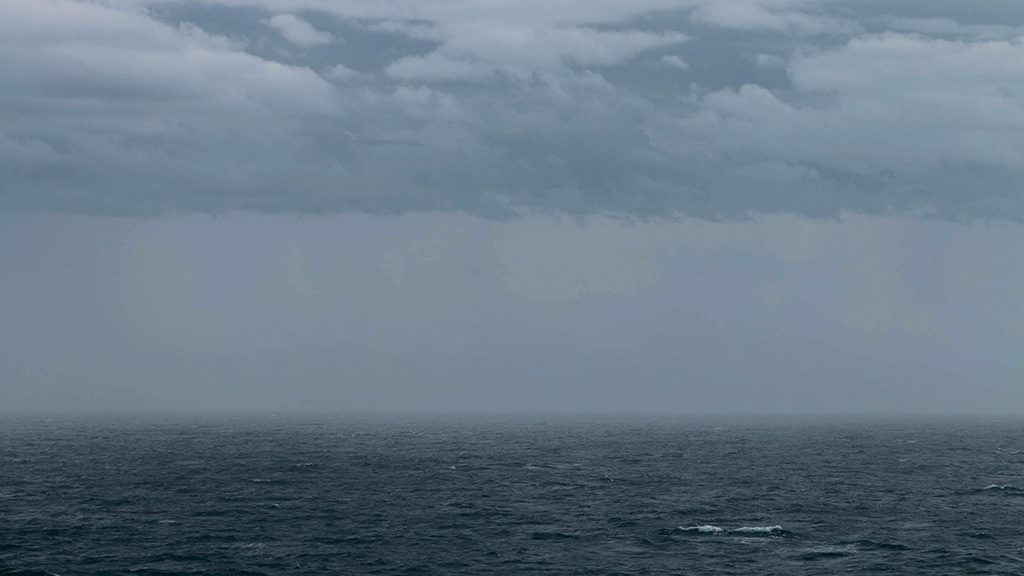
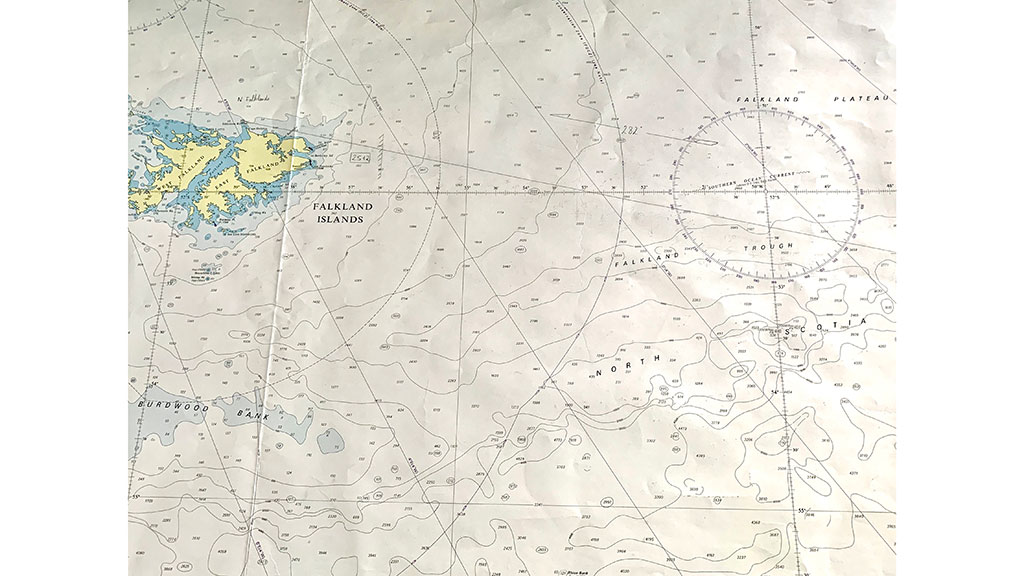
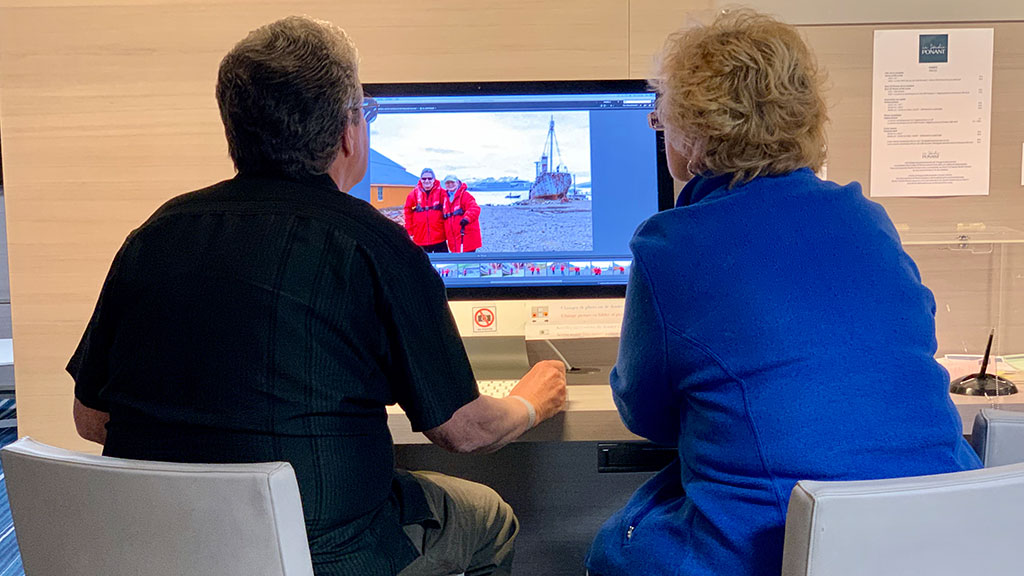



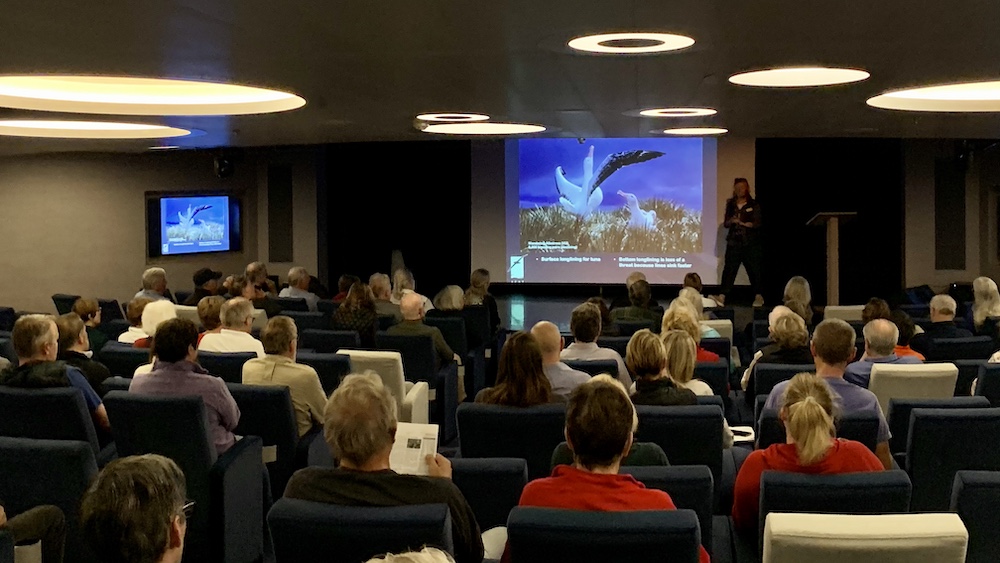
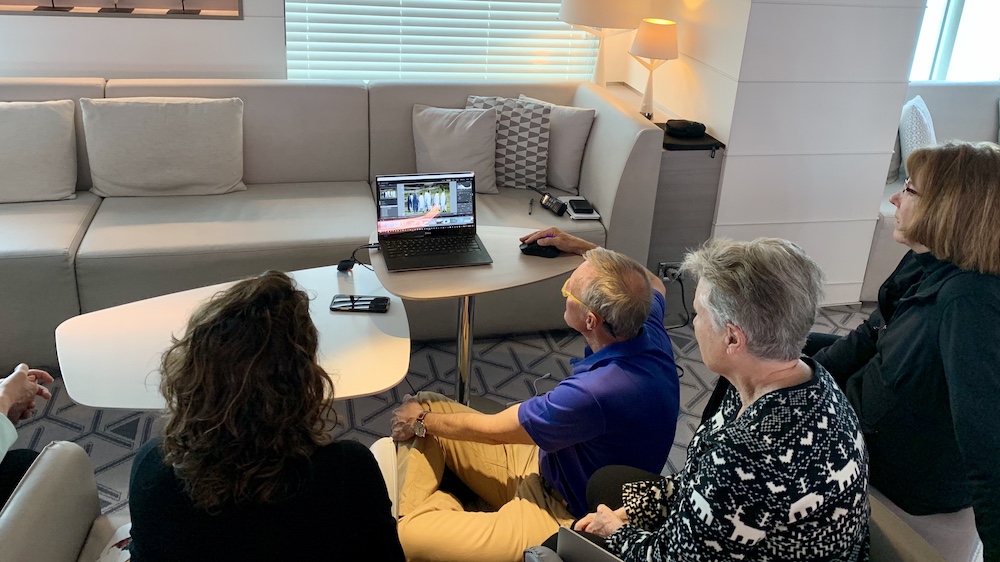
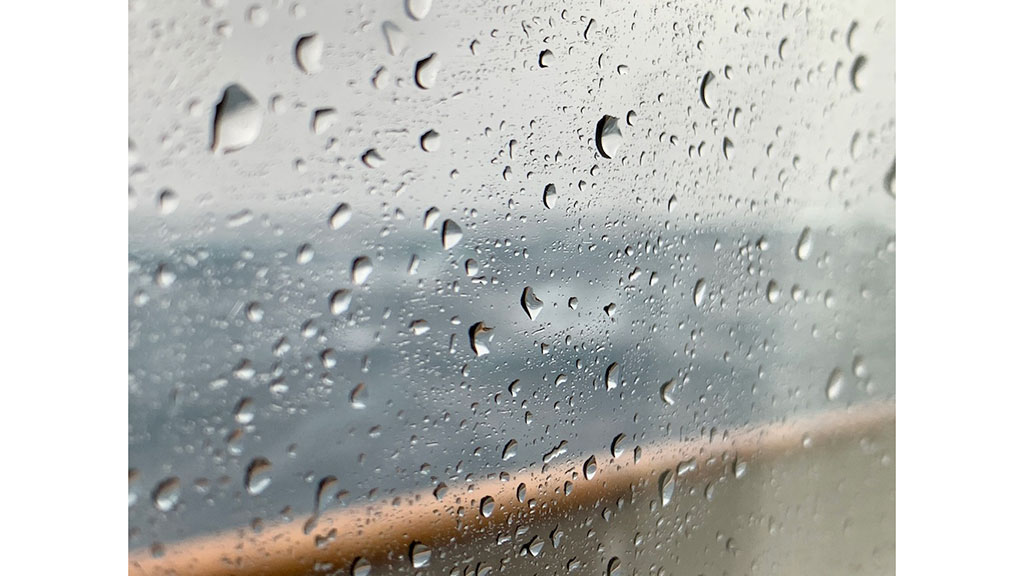





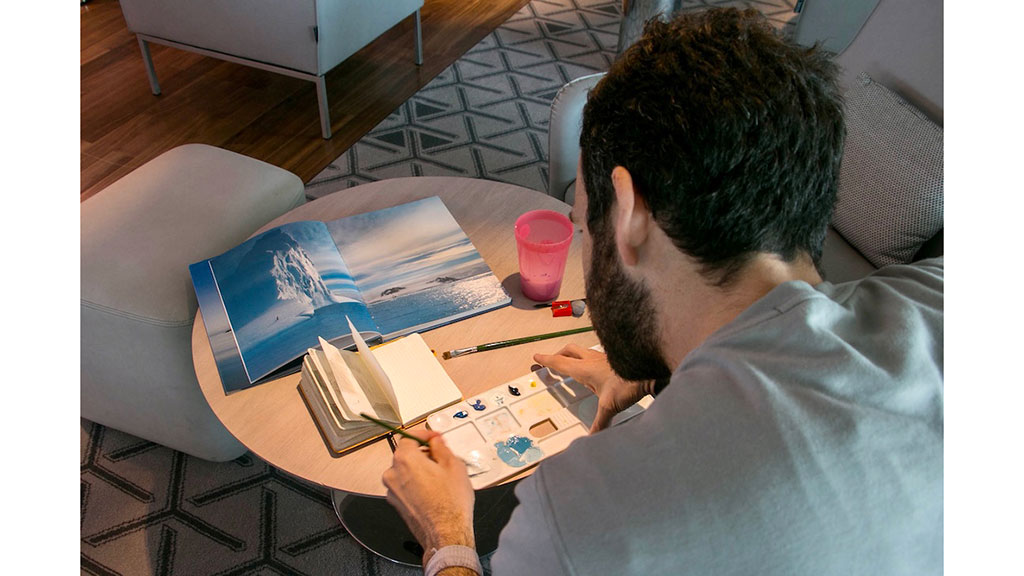
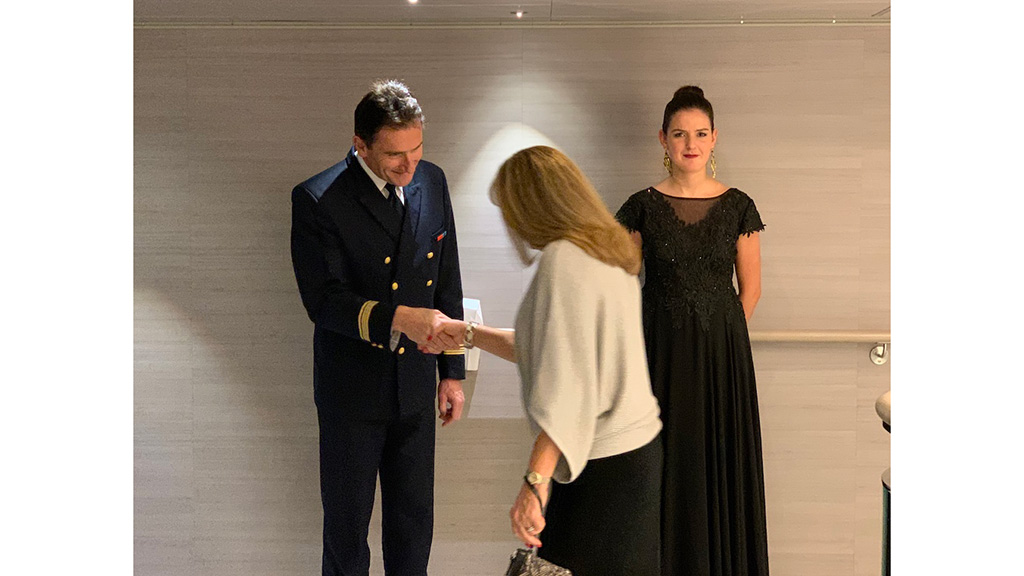
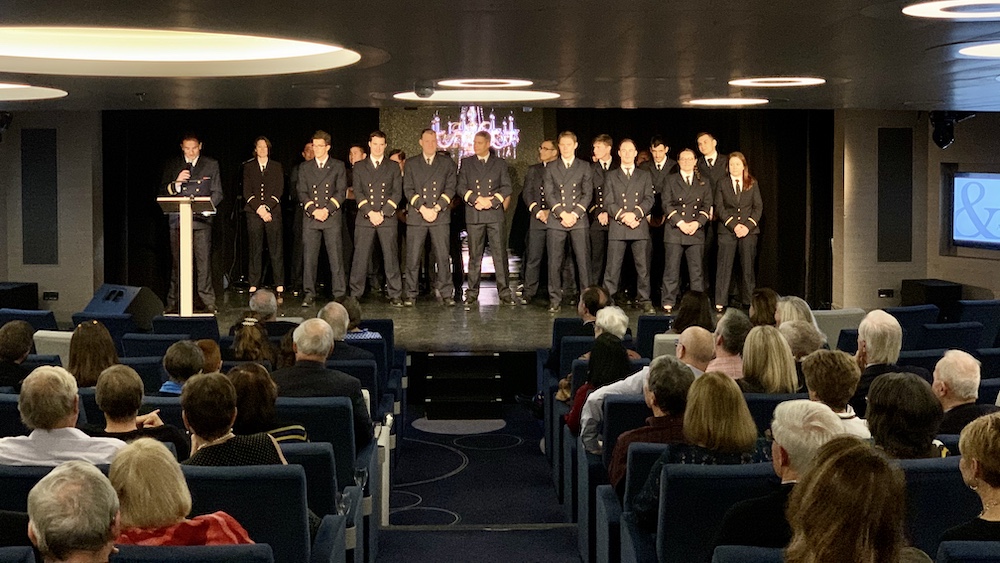
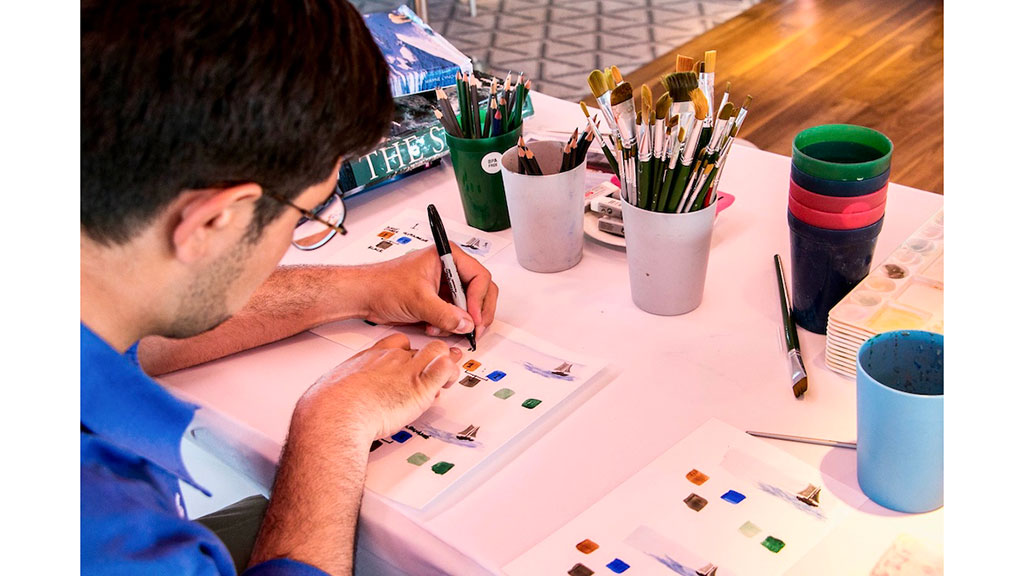
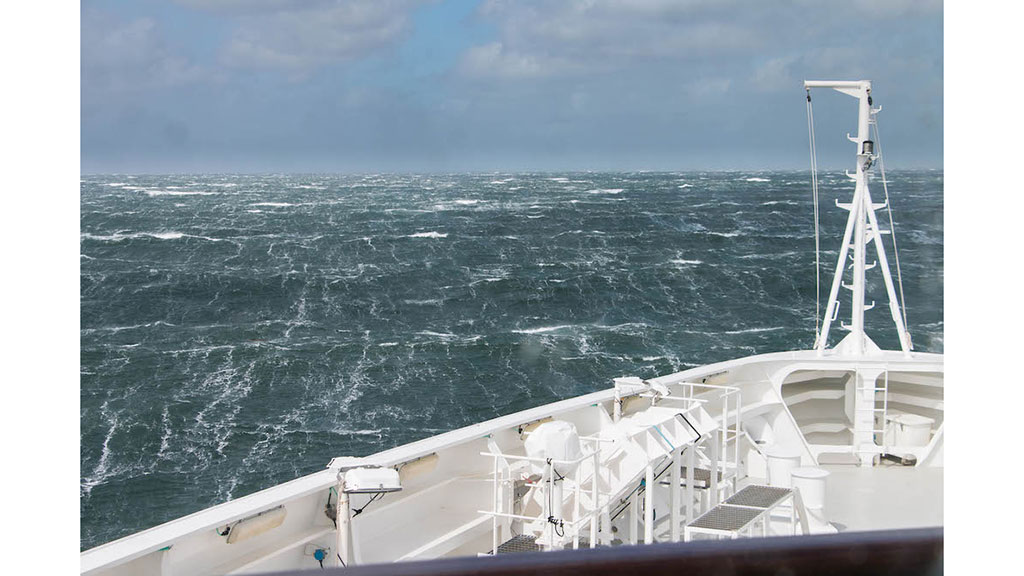




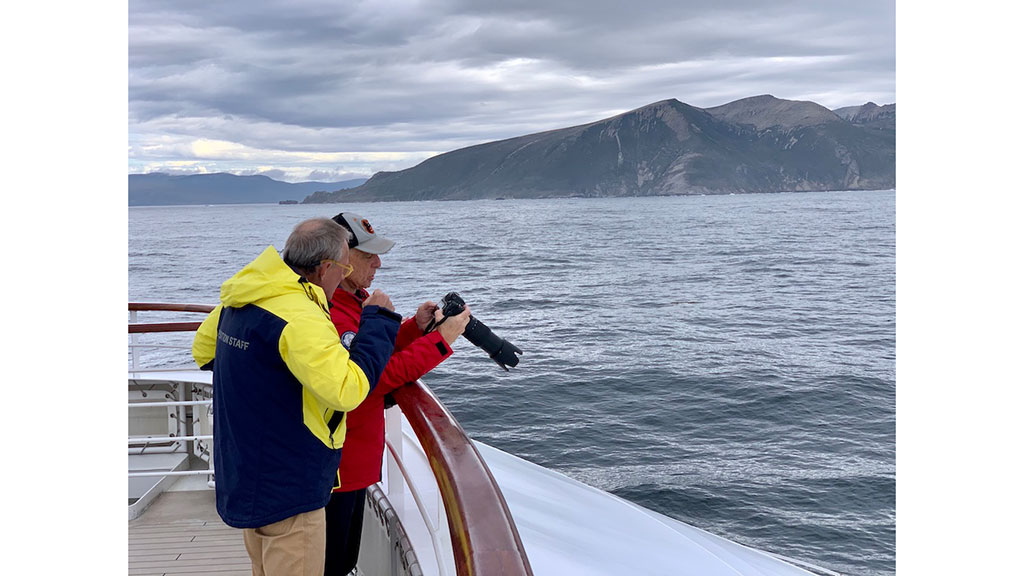
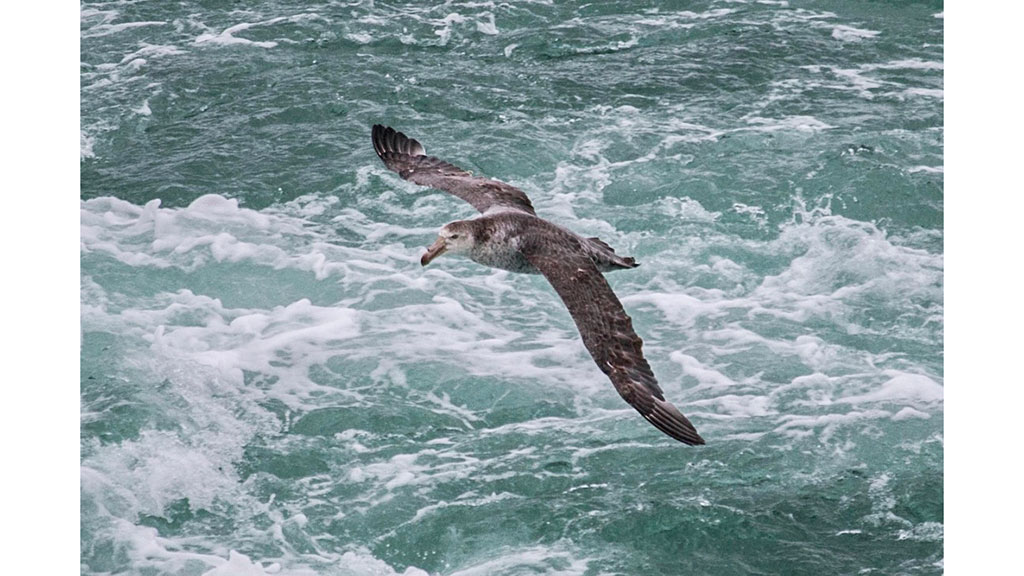
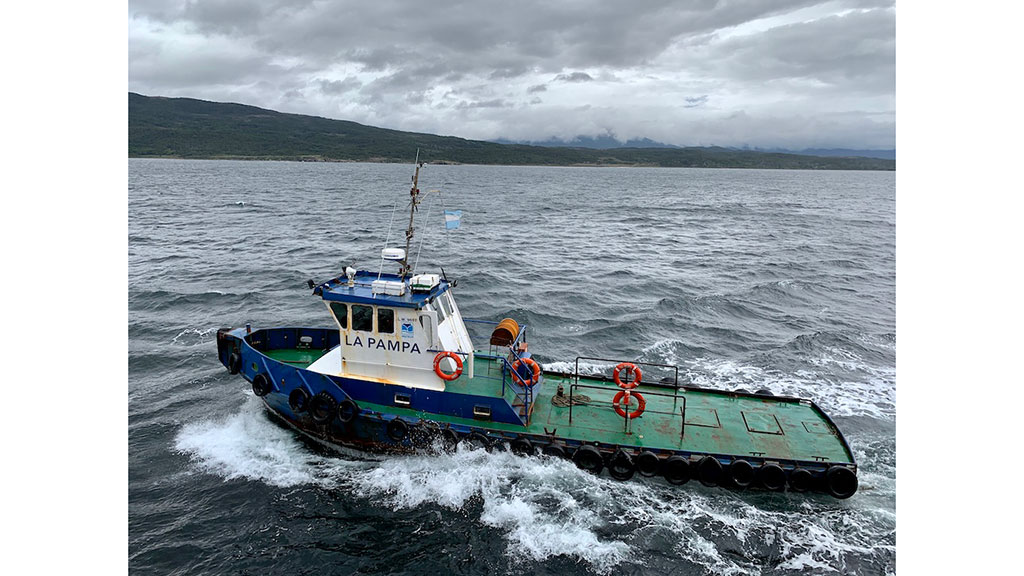
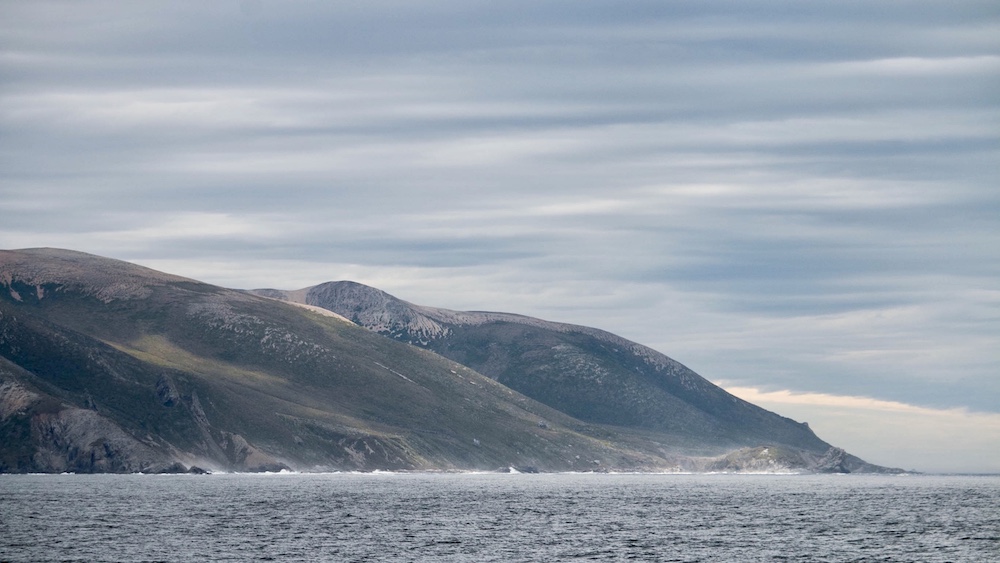

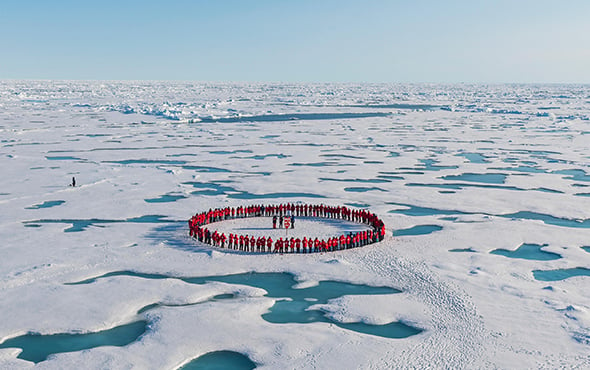
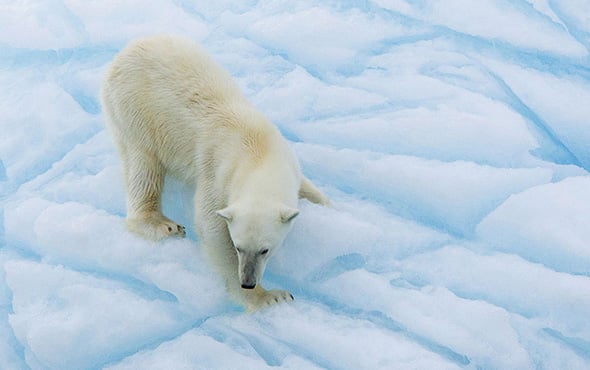
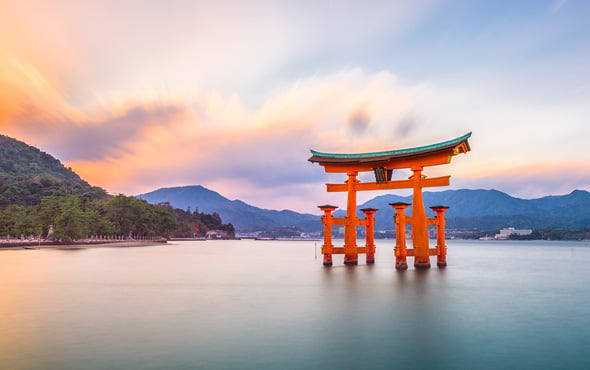


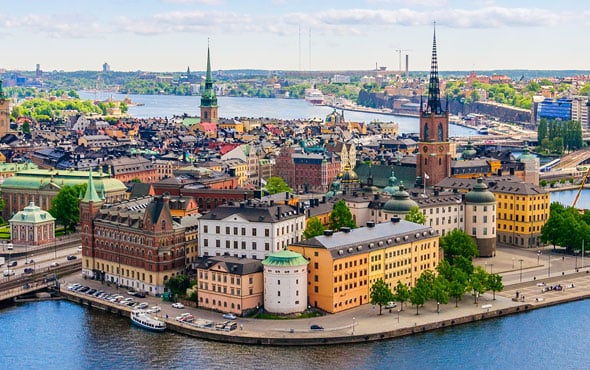

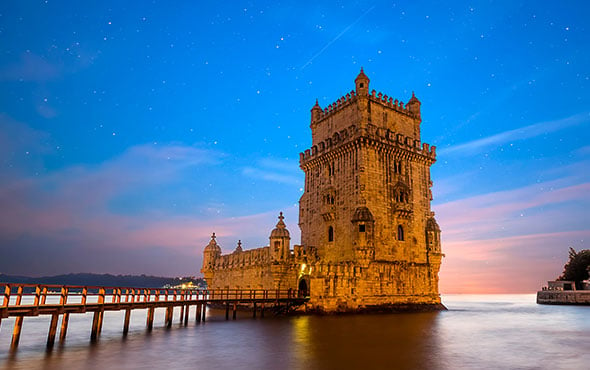

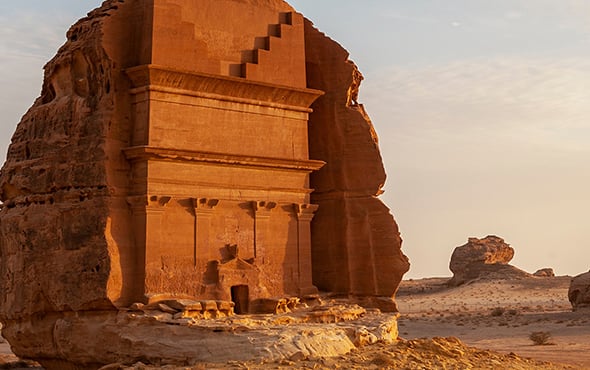
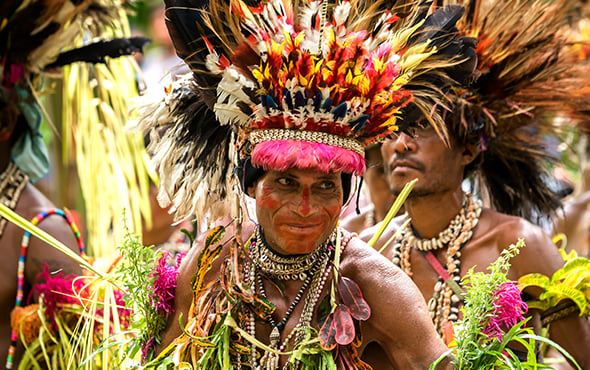
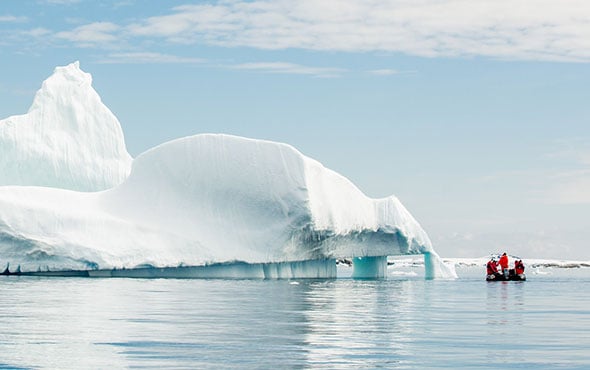
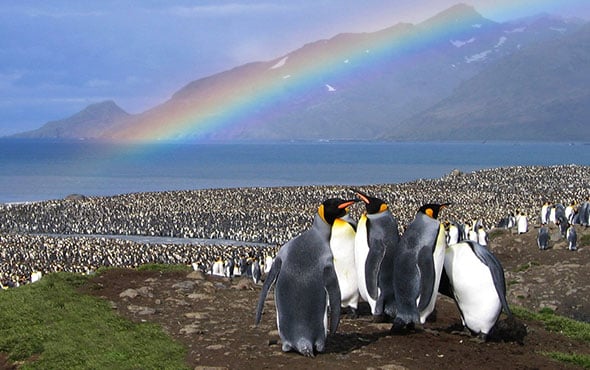
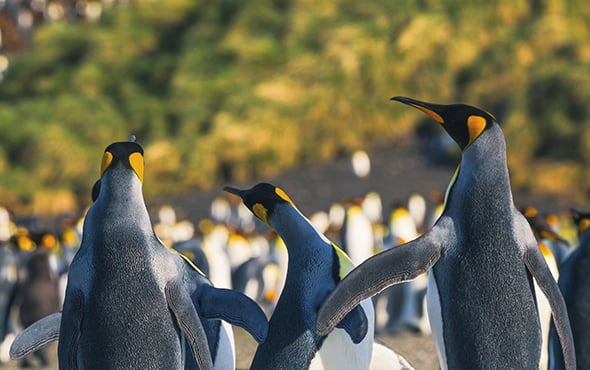


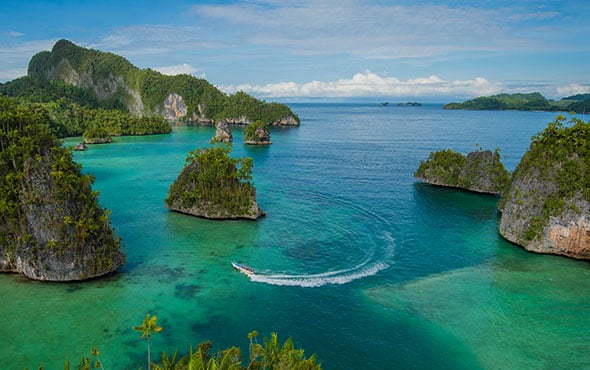
 The Americas
The Americas
 Europe, Middle East and Africa
Europe, Middle East and Africa Australia, NZ and SE Asia
Australia, NZ and SE Asia